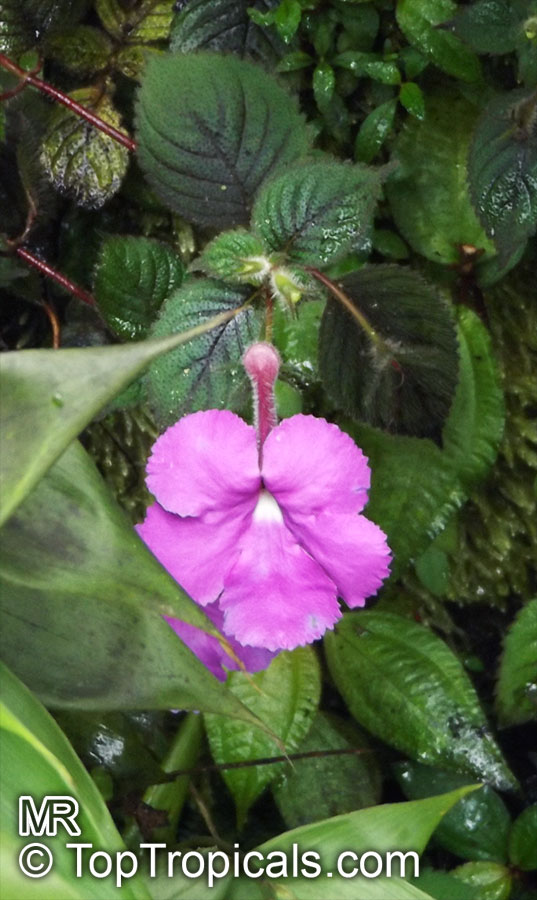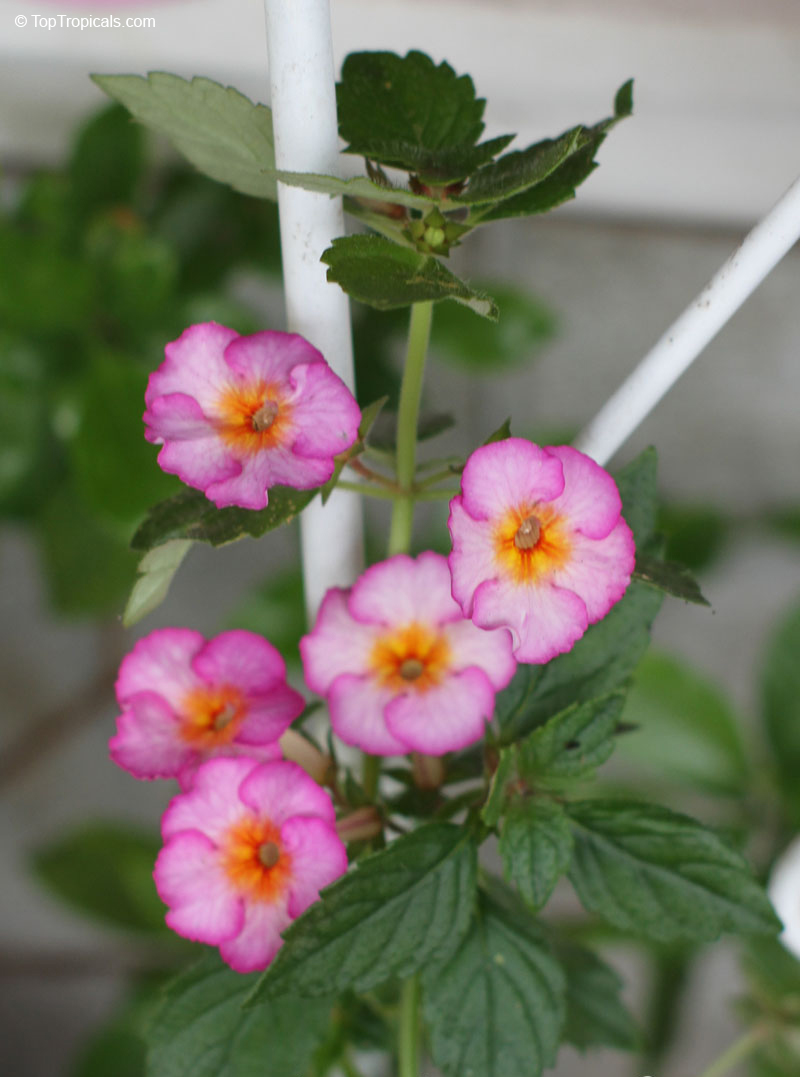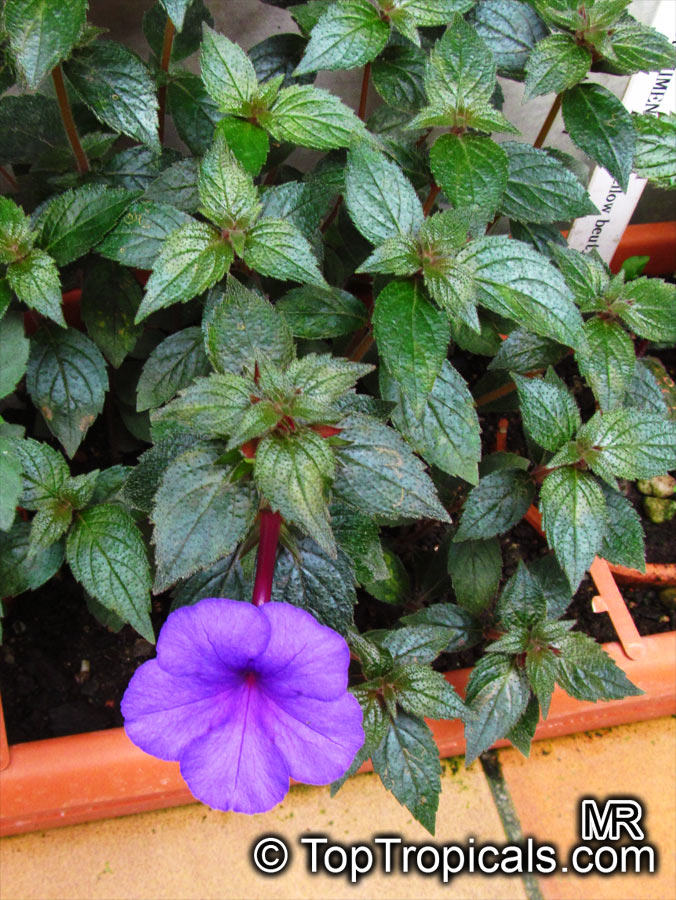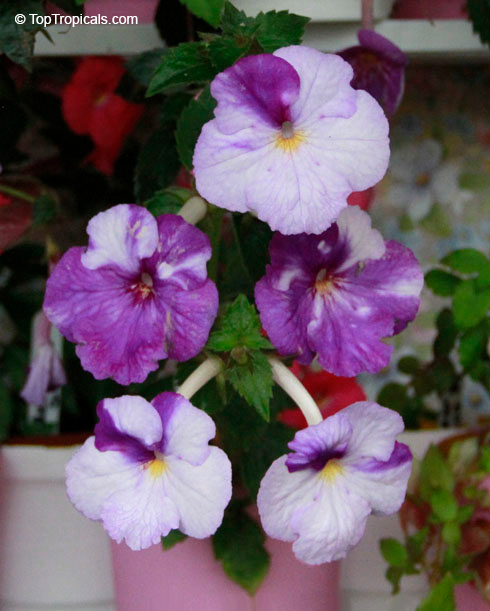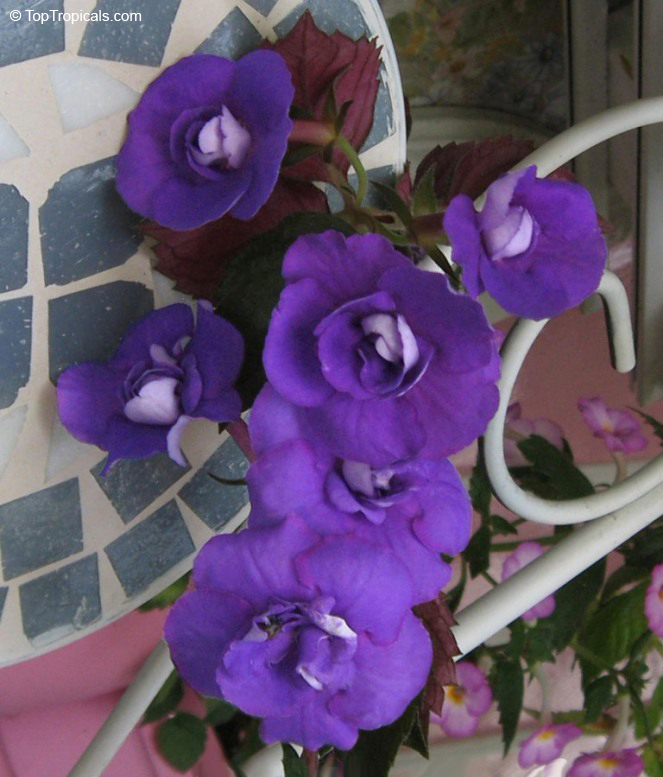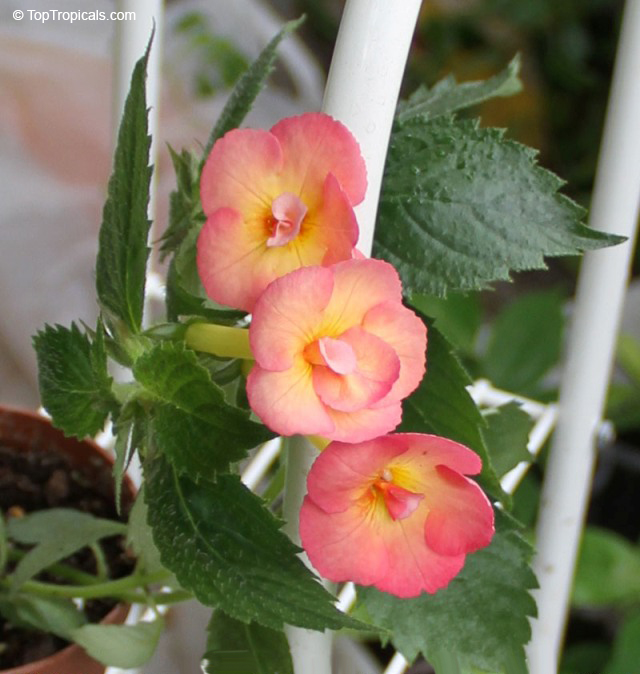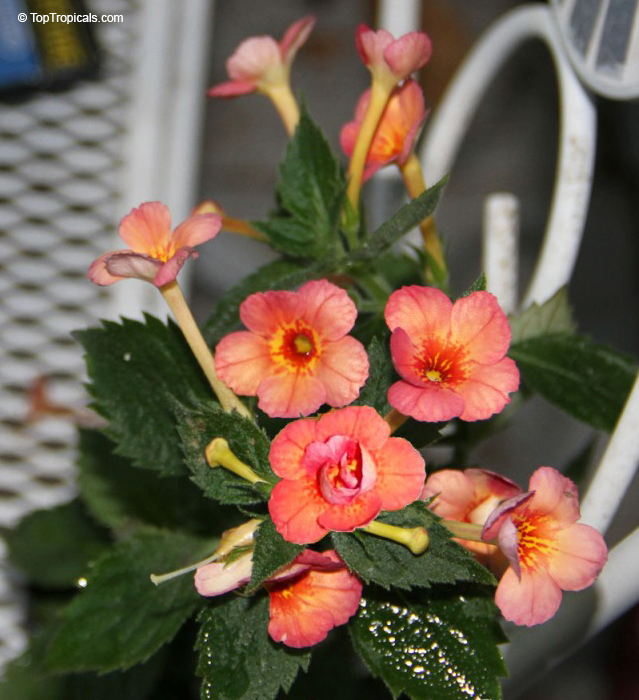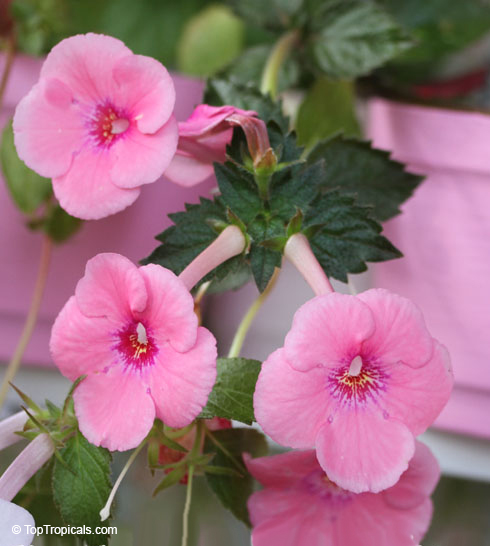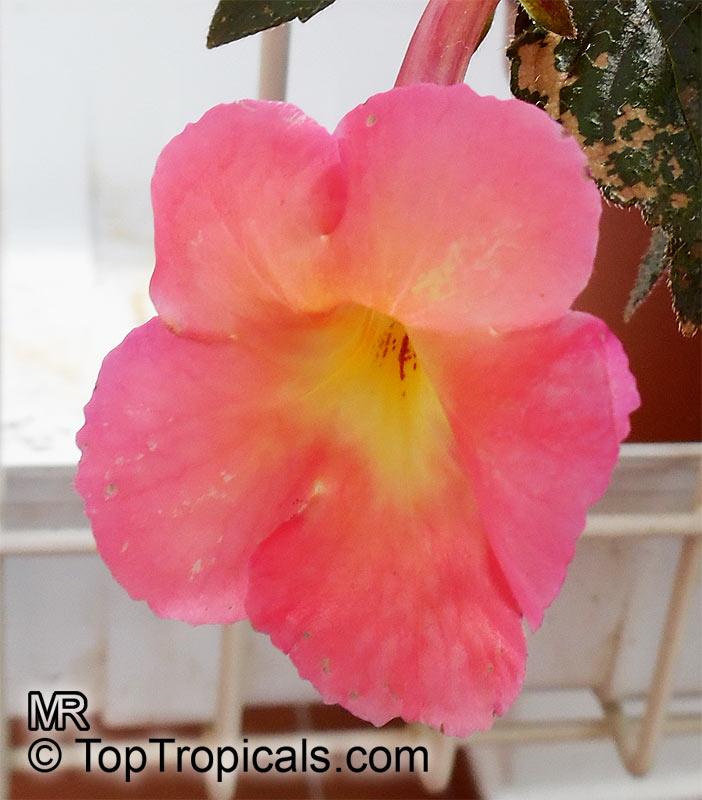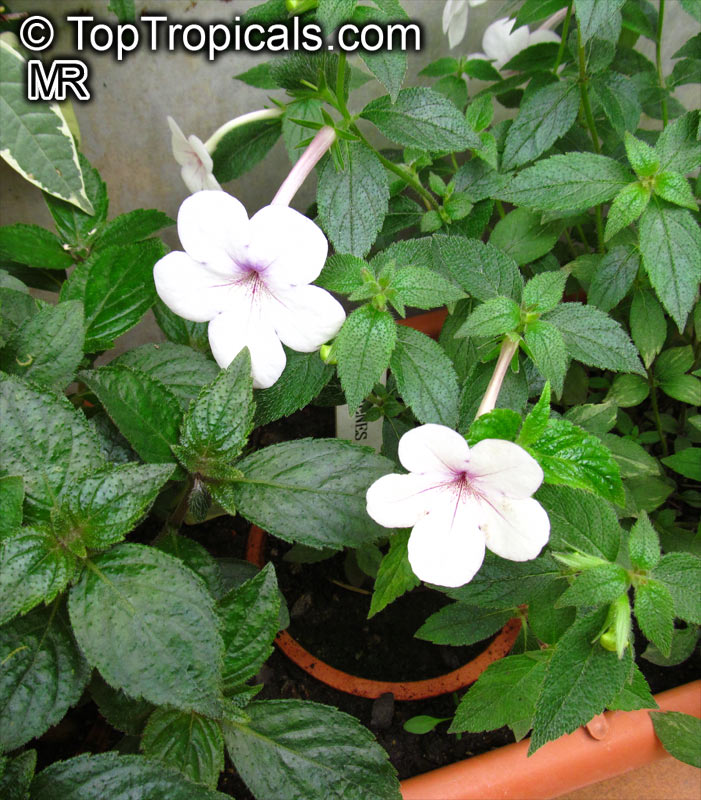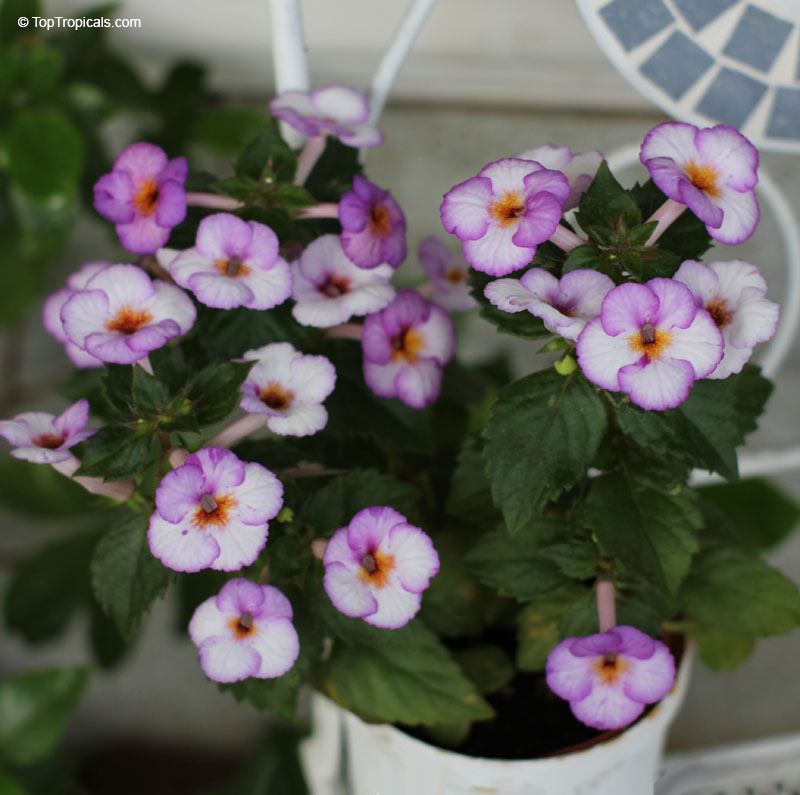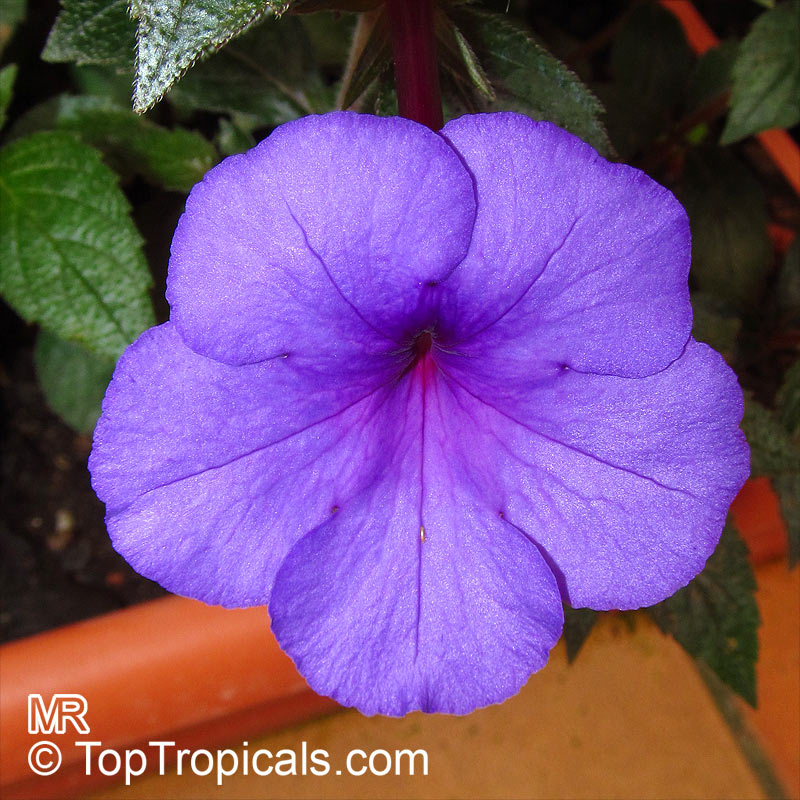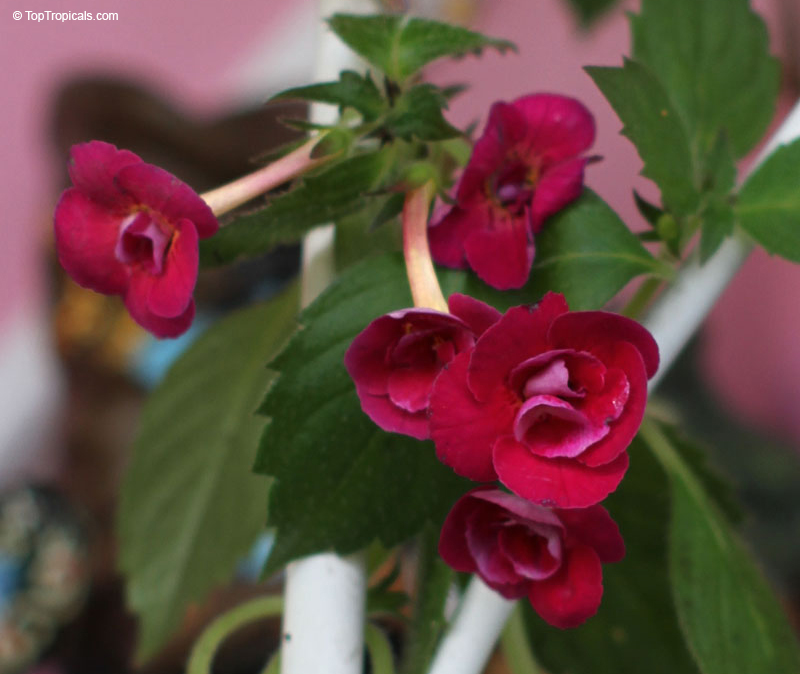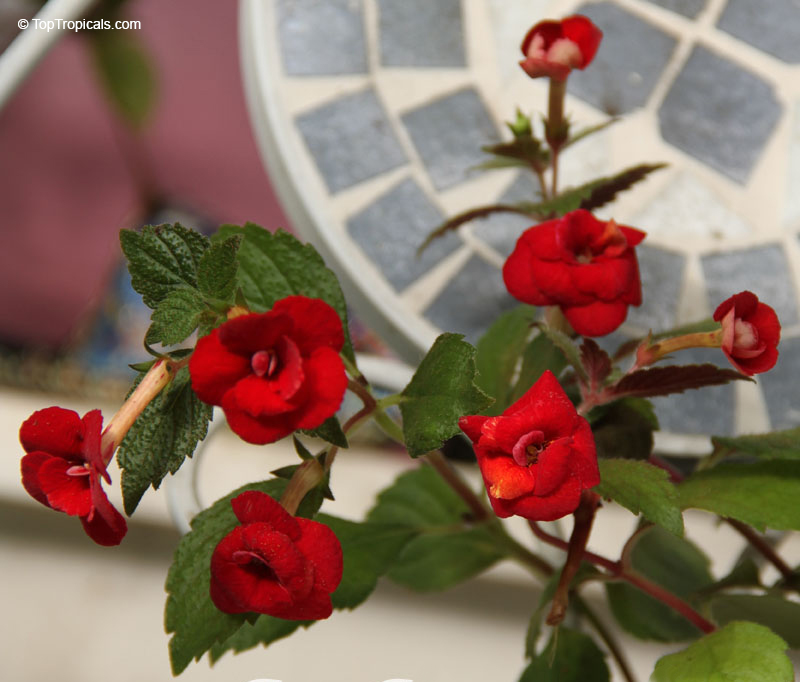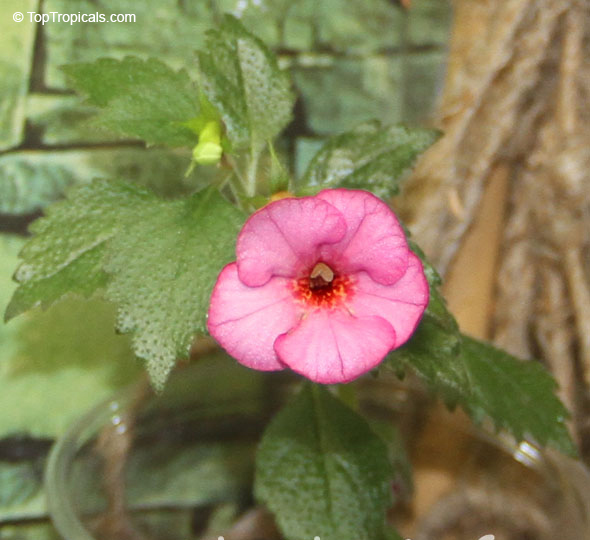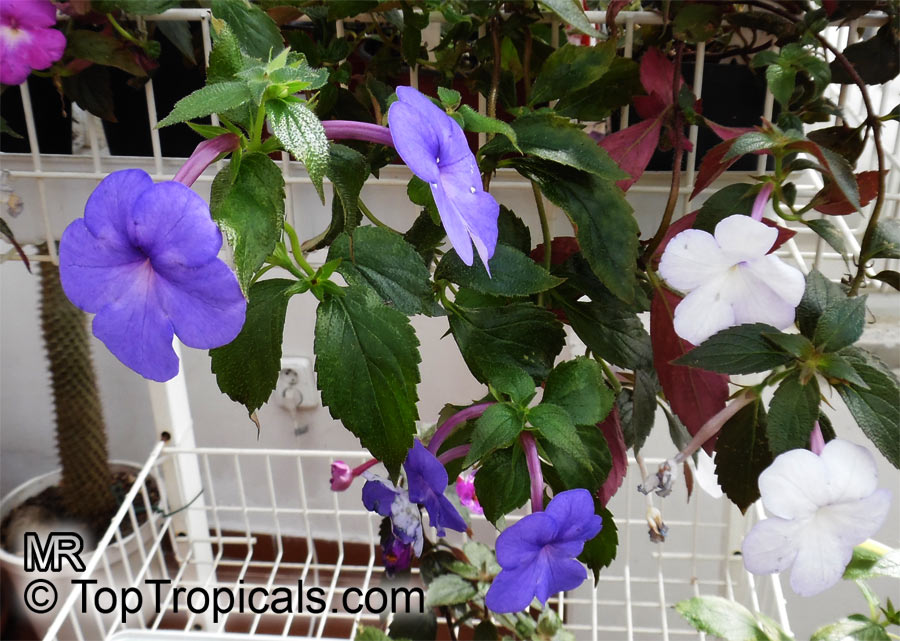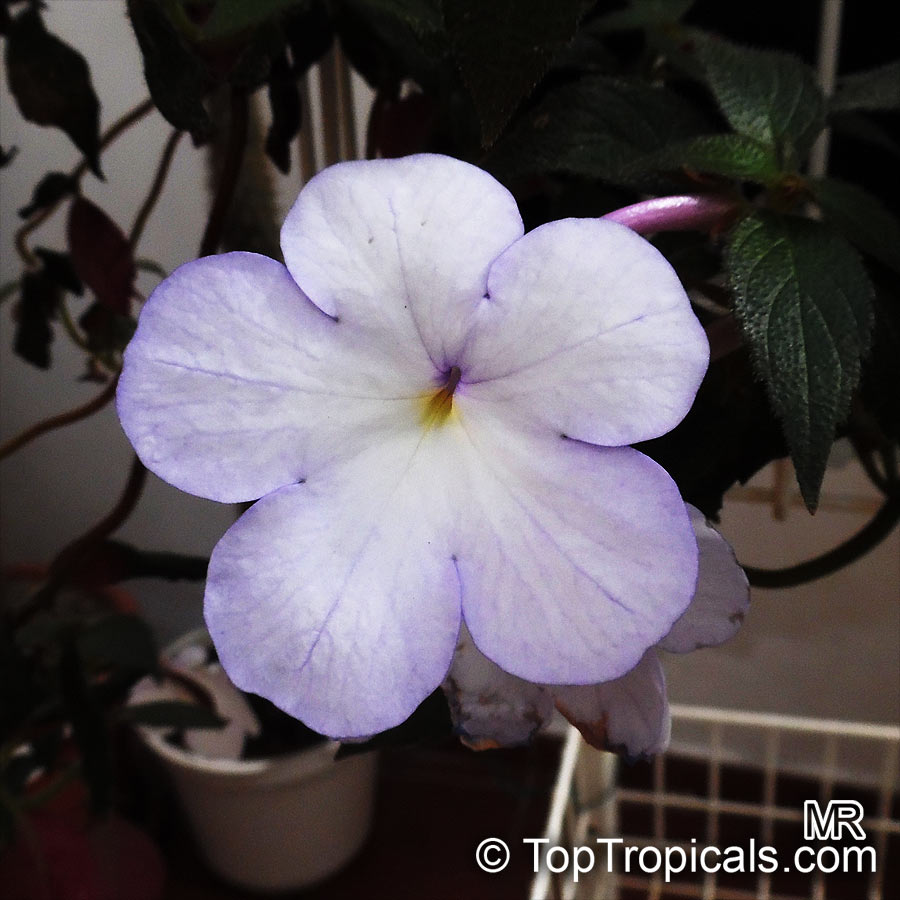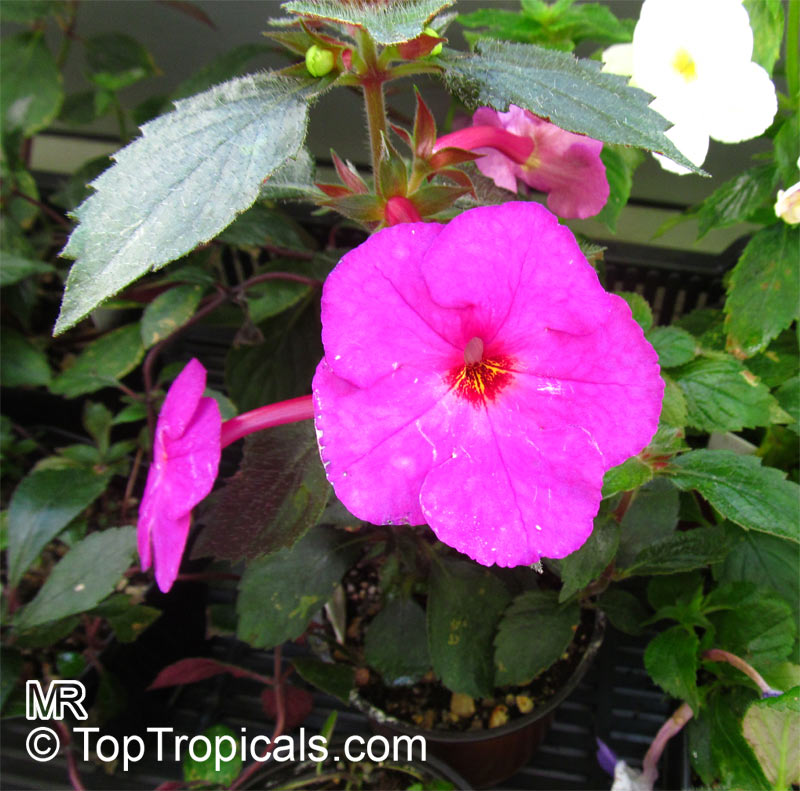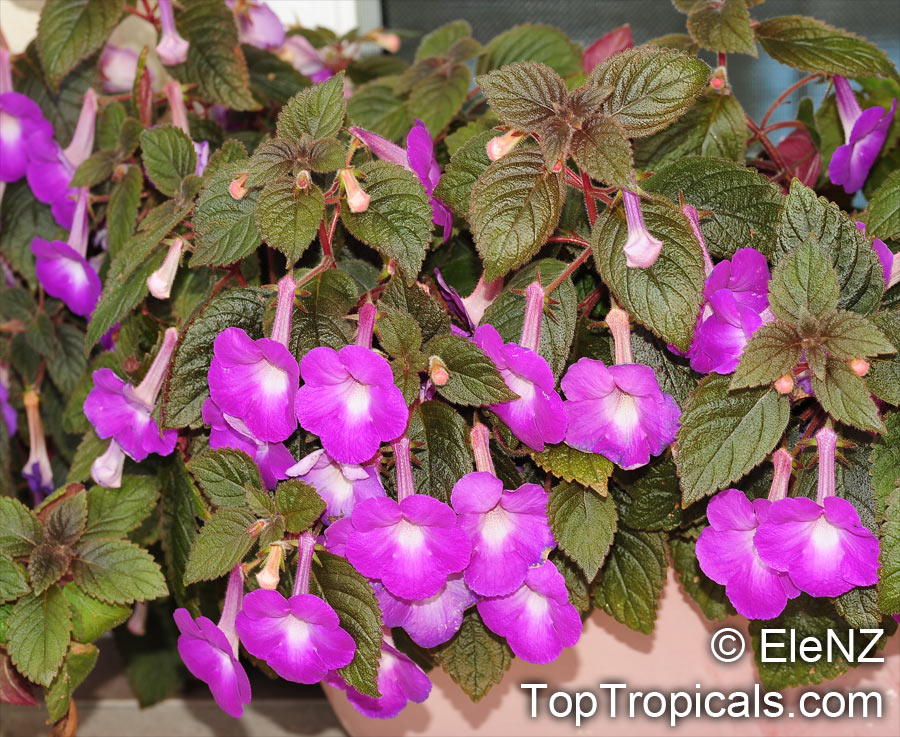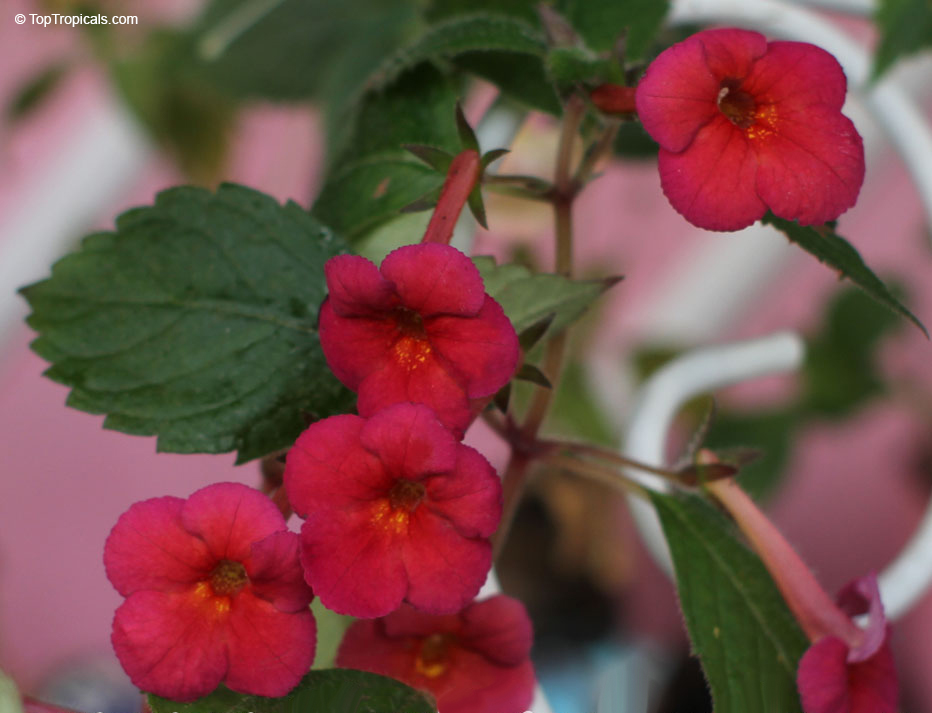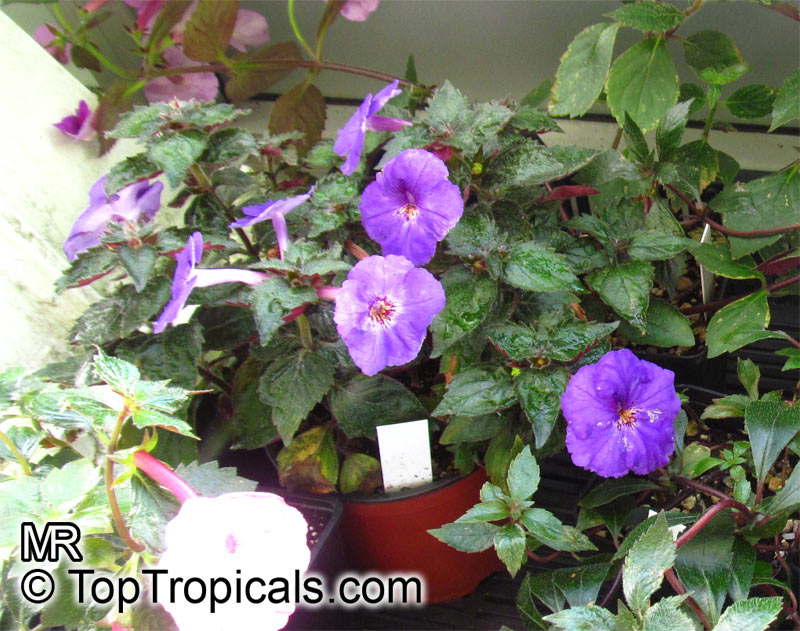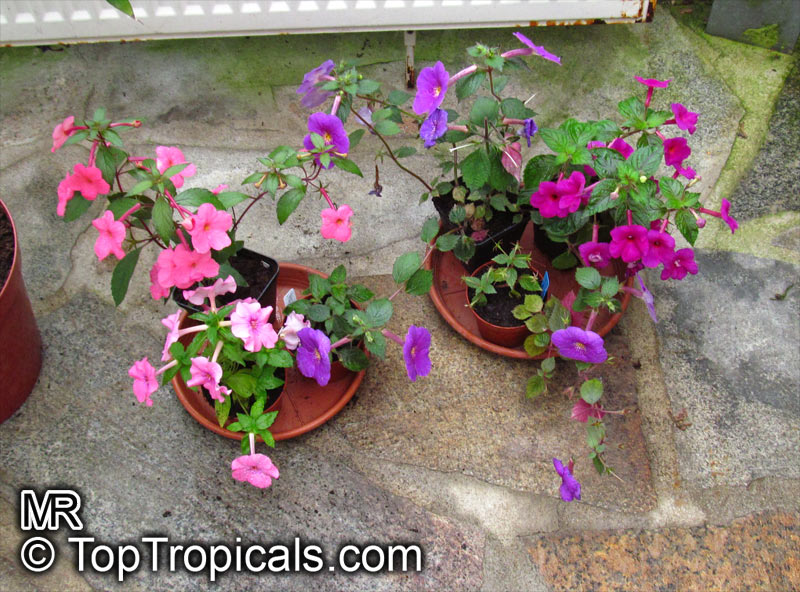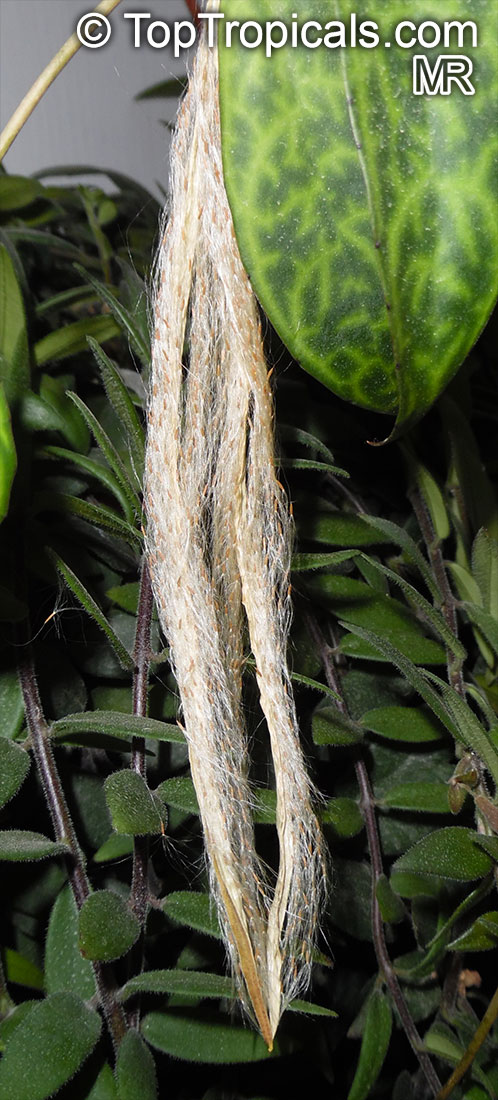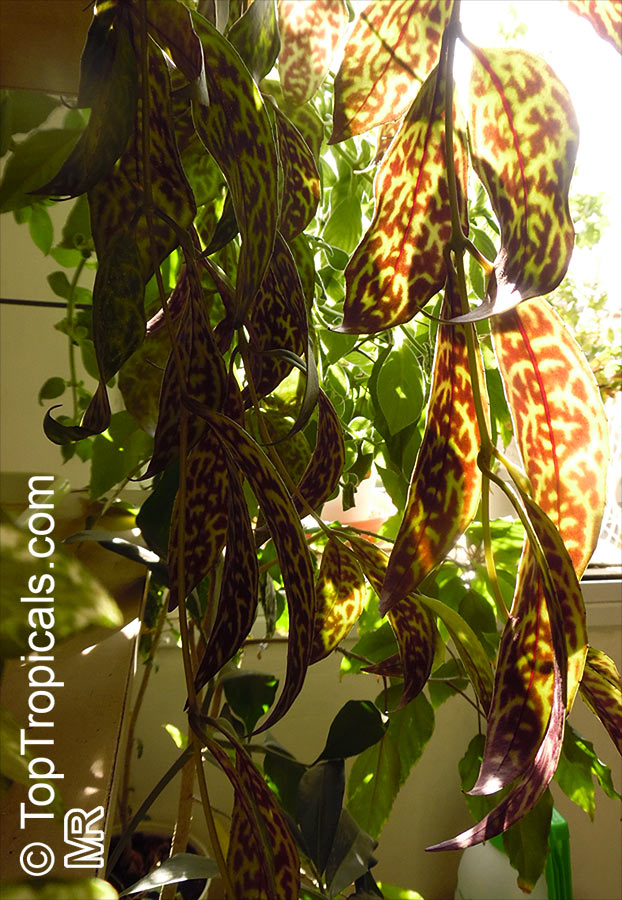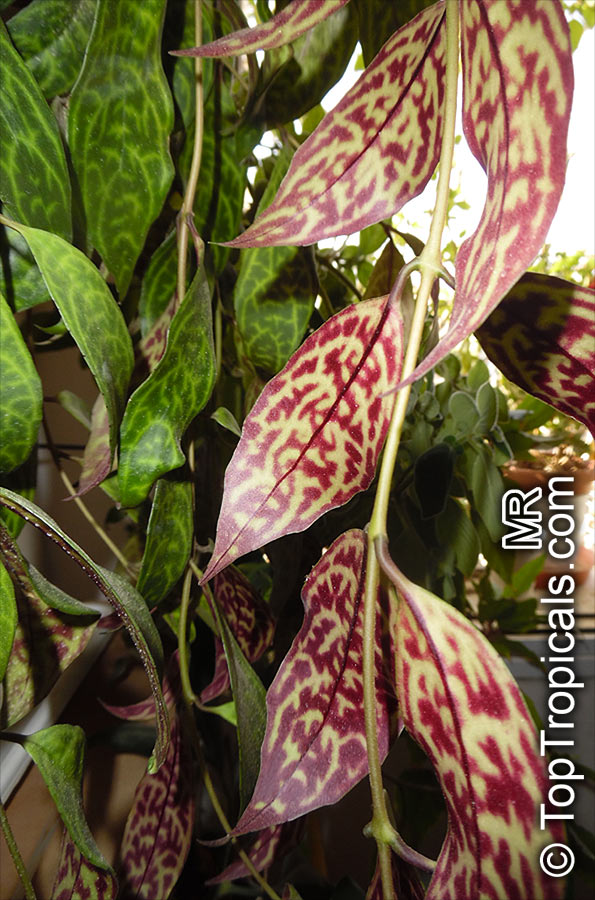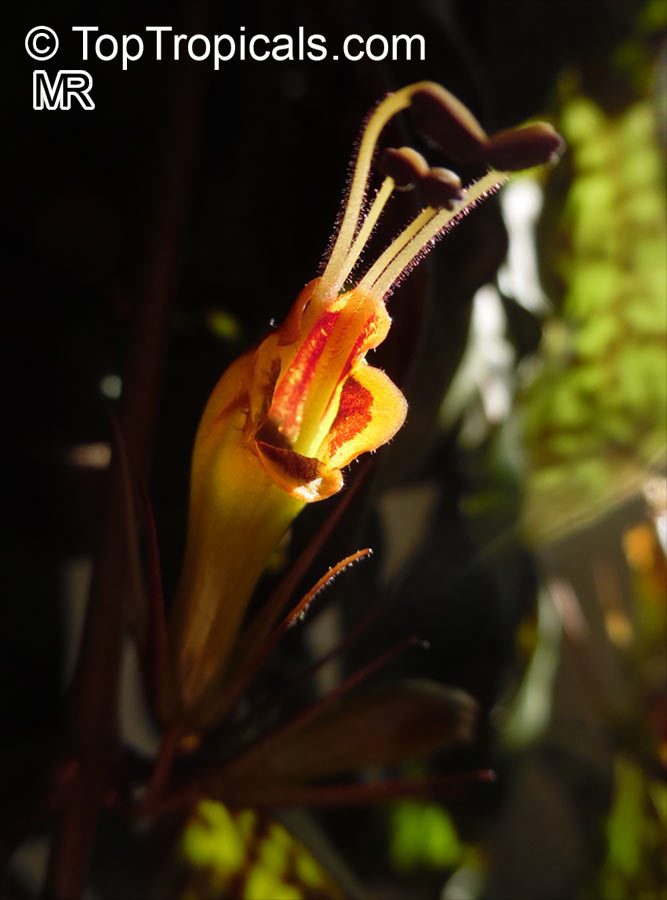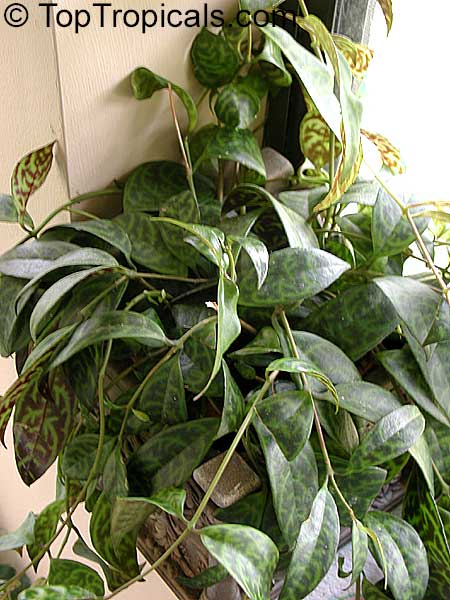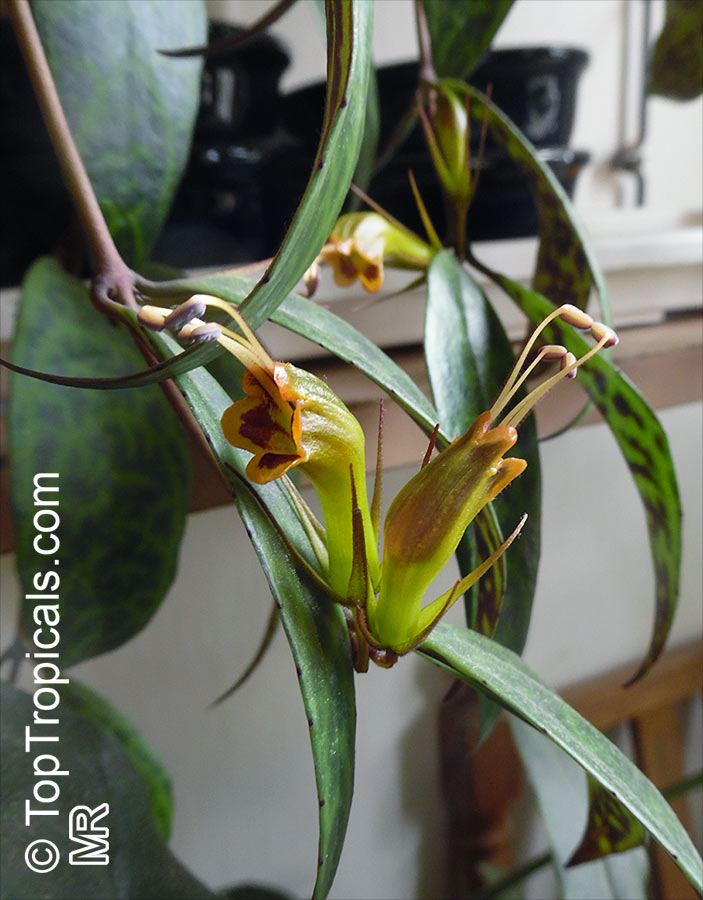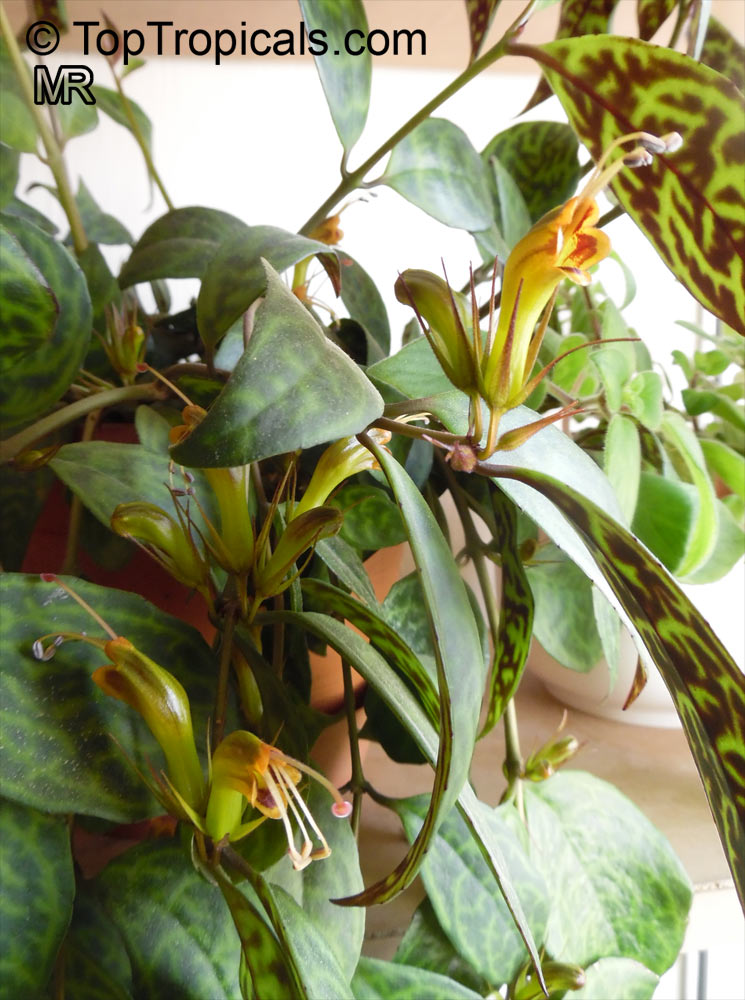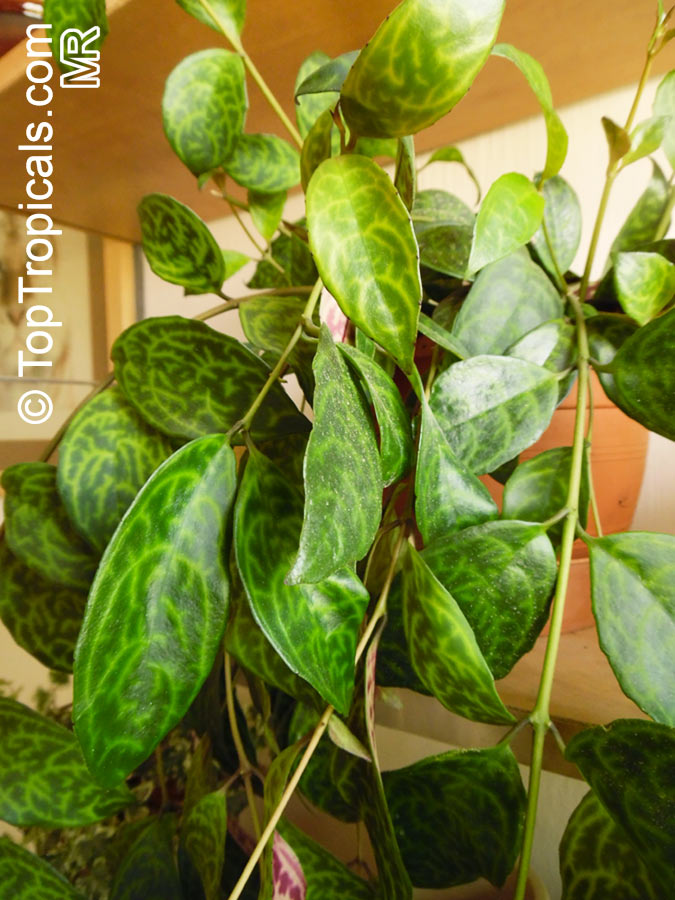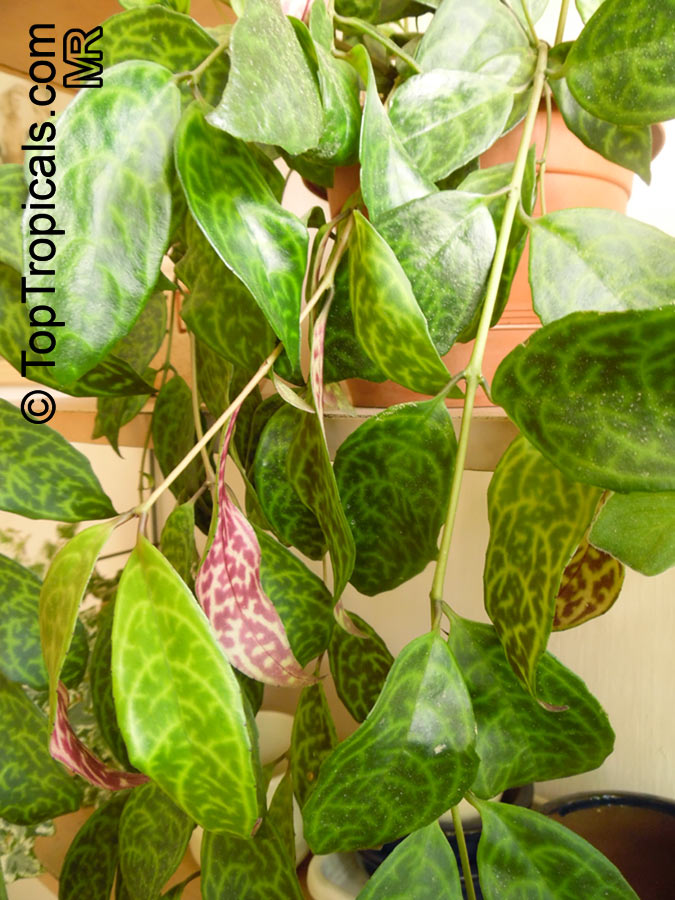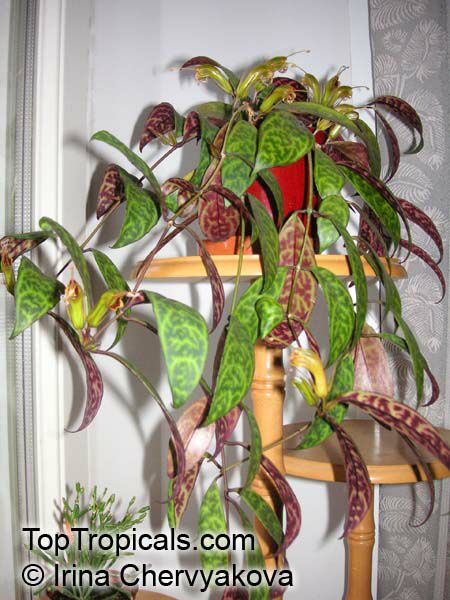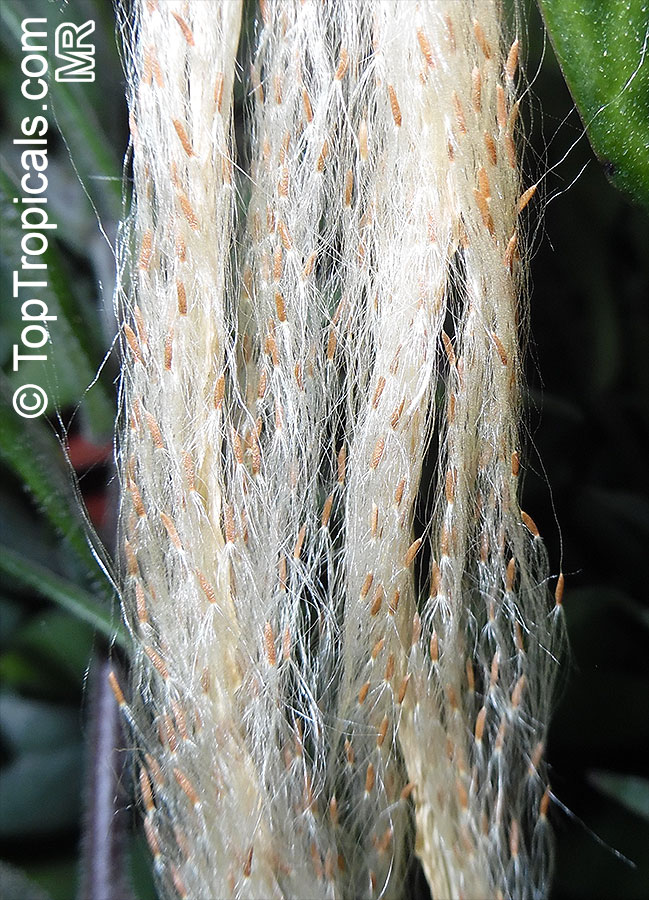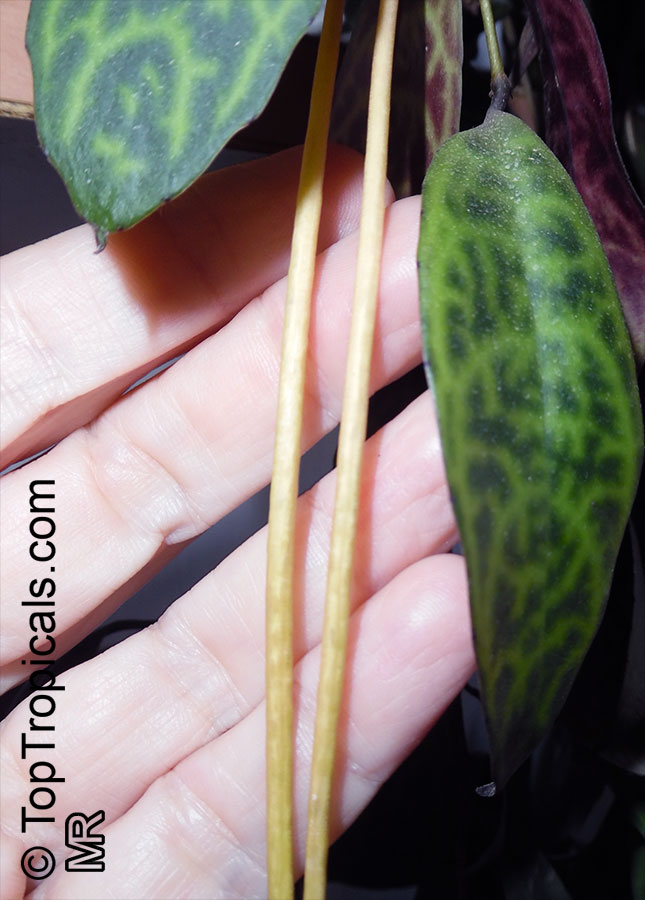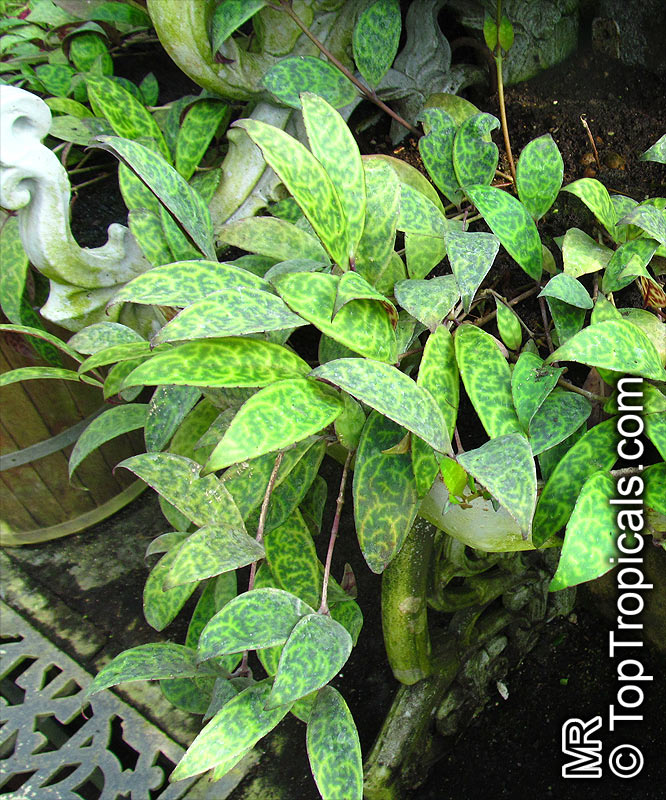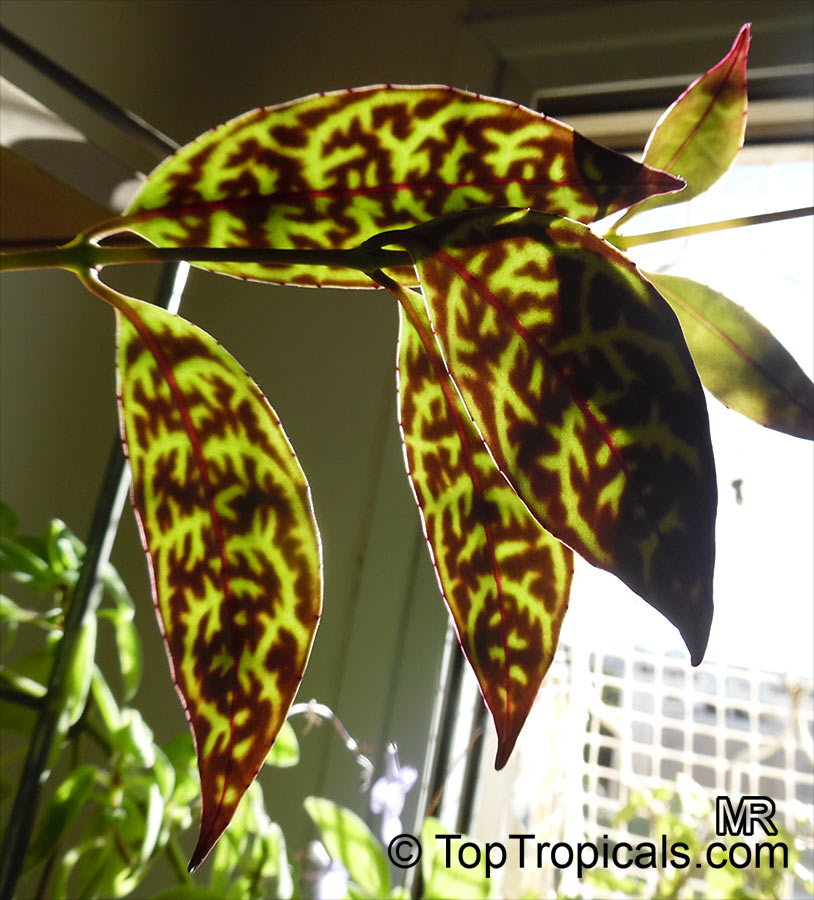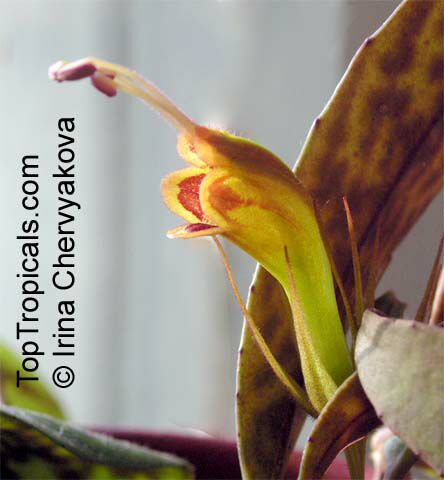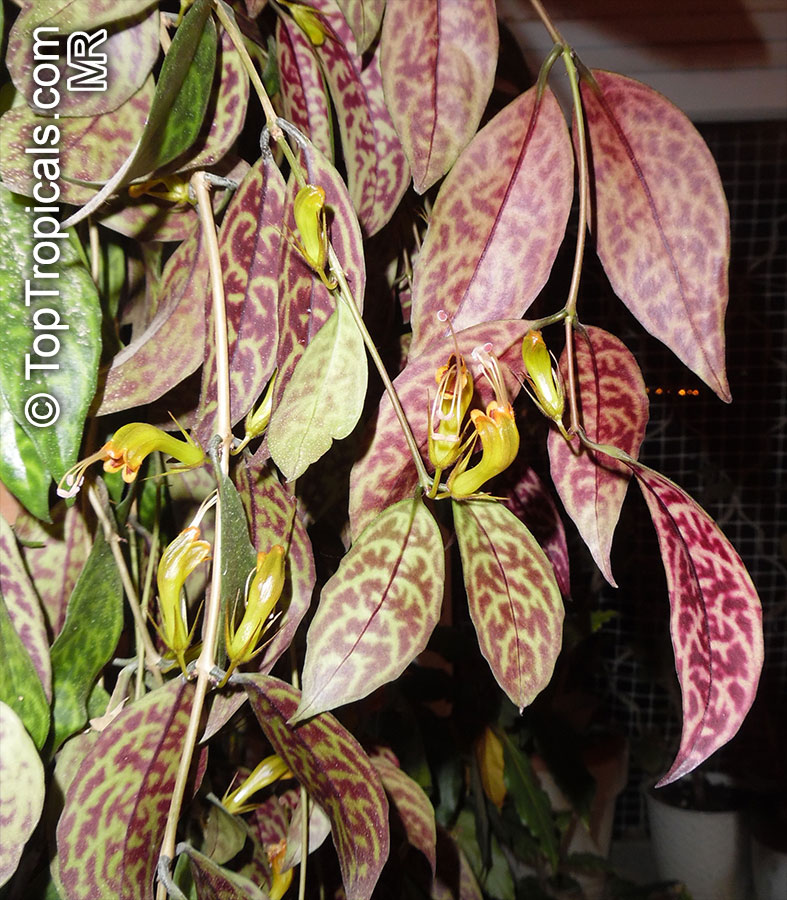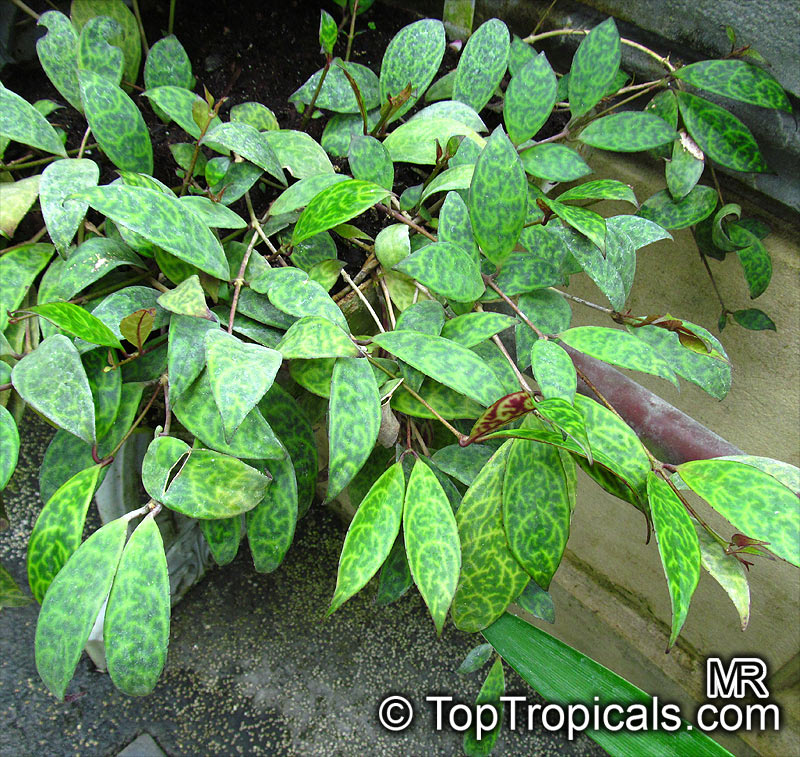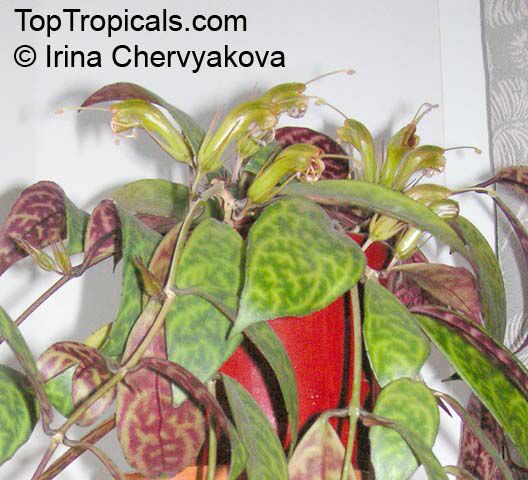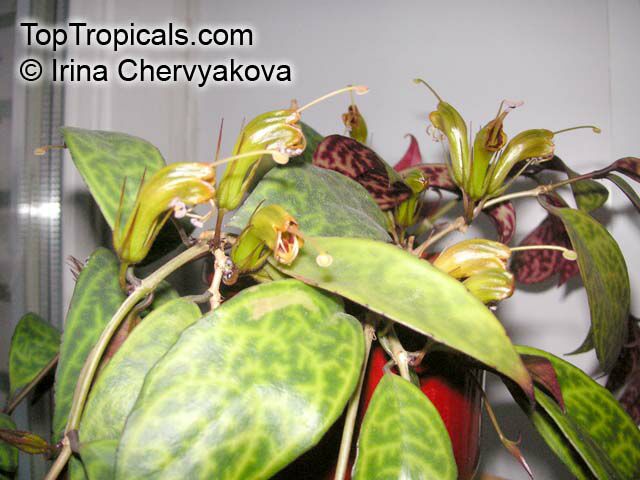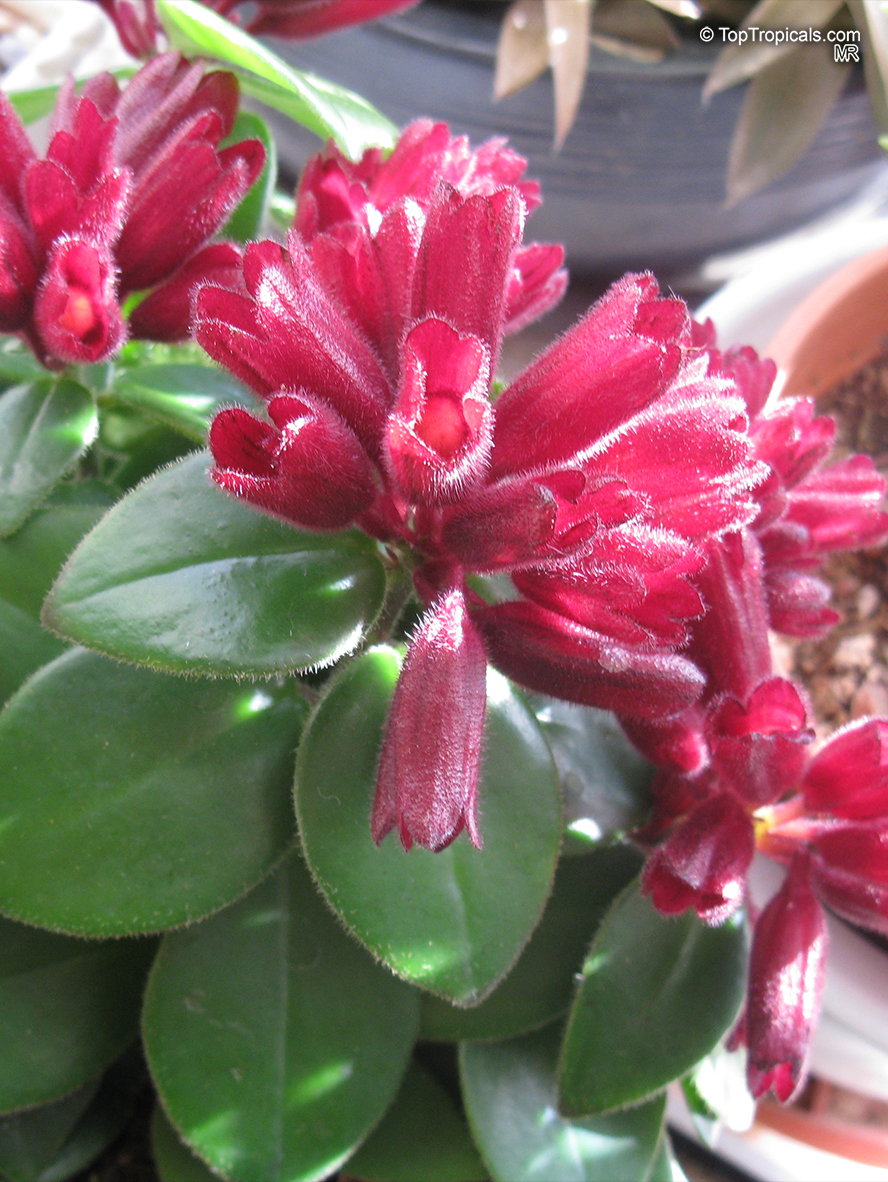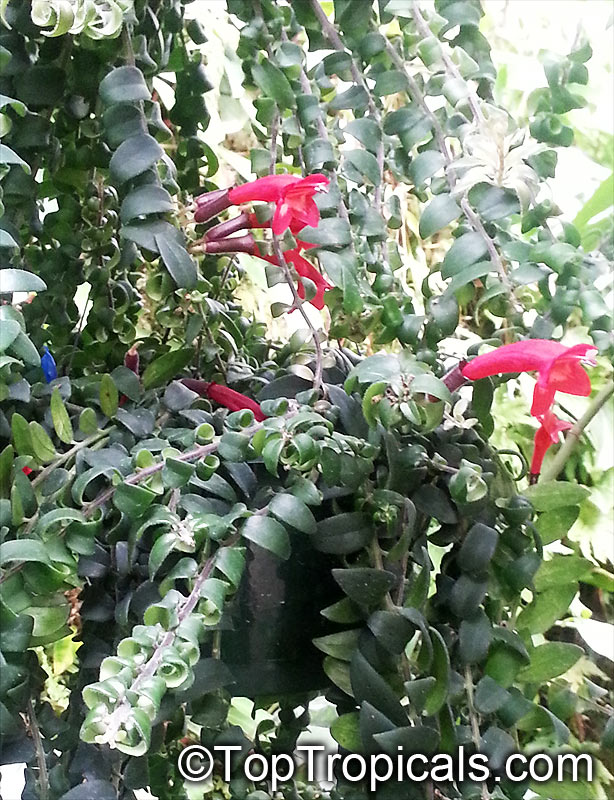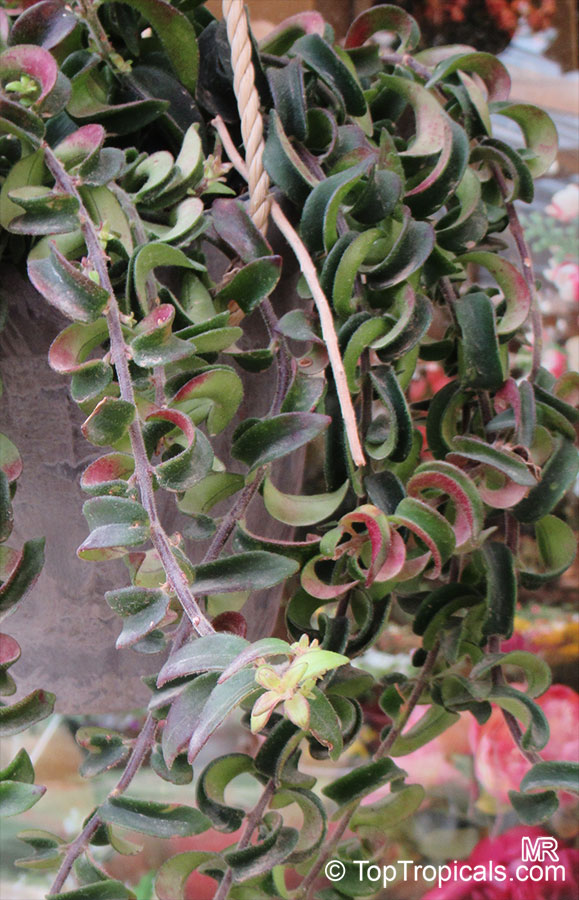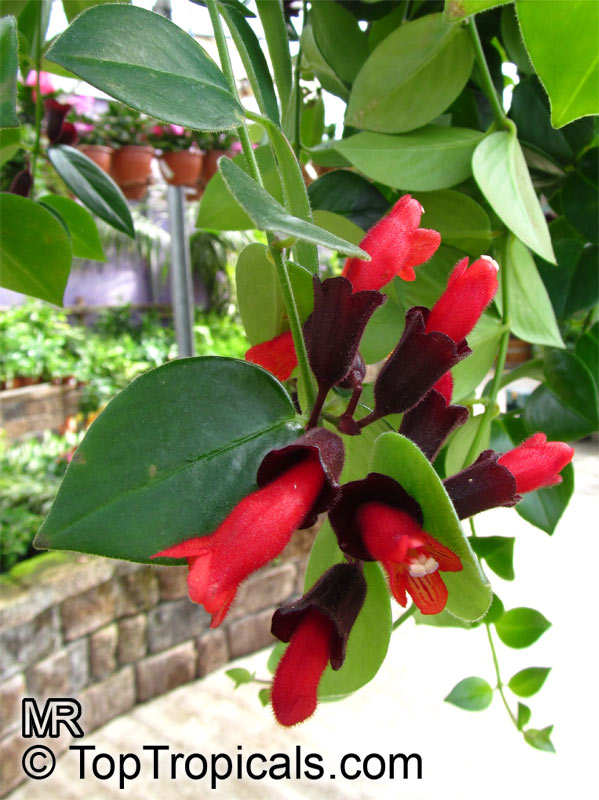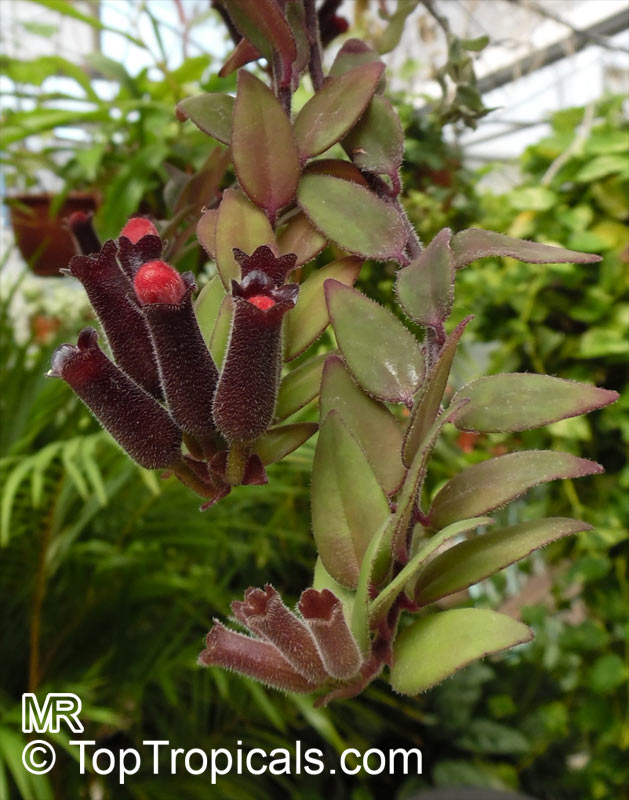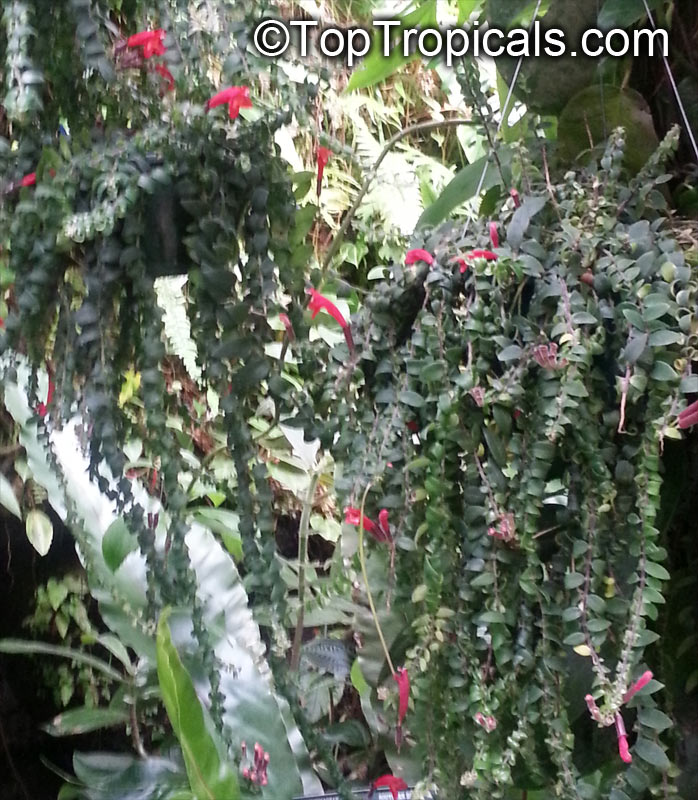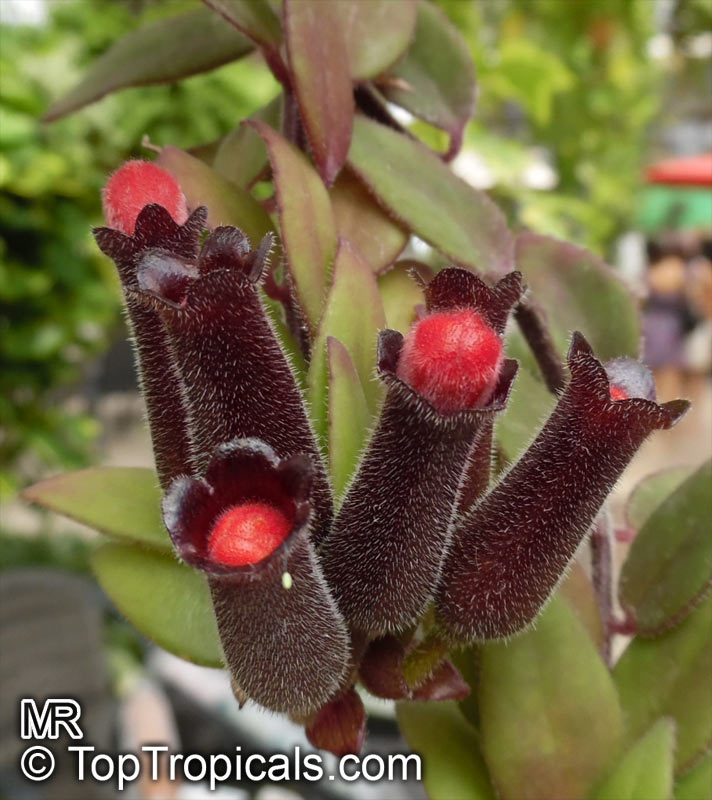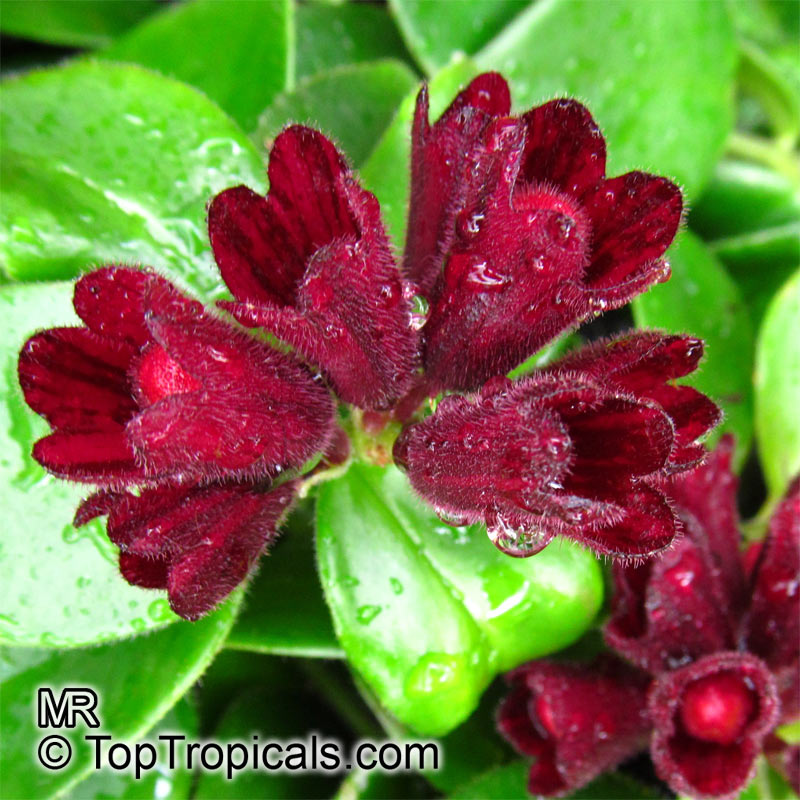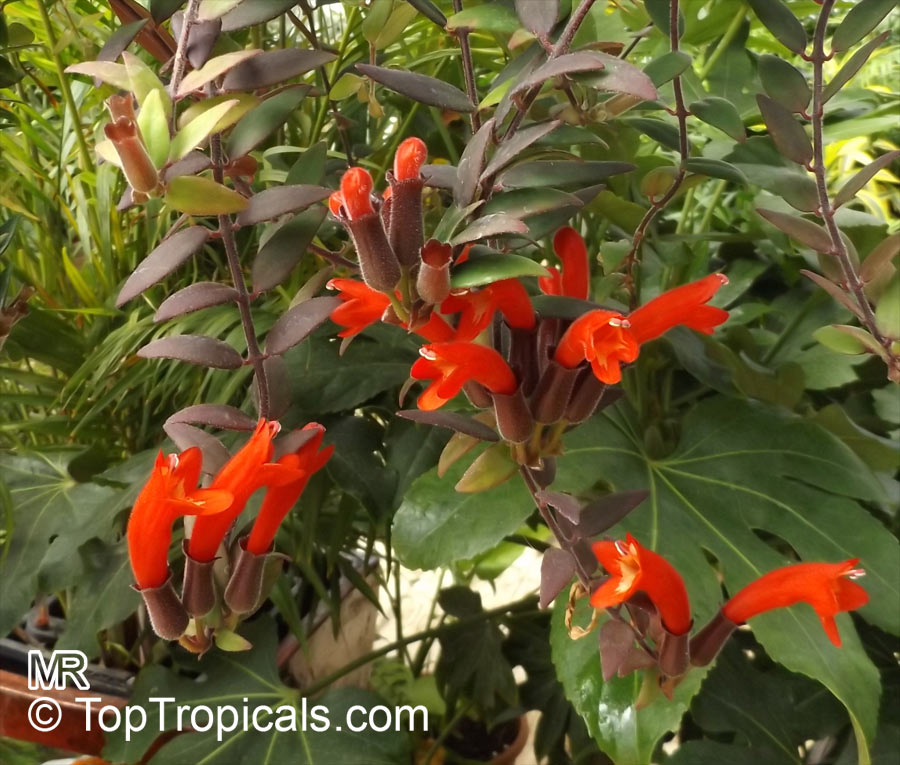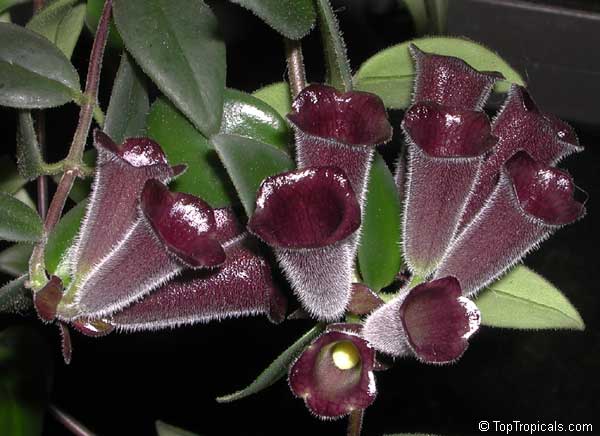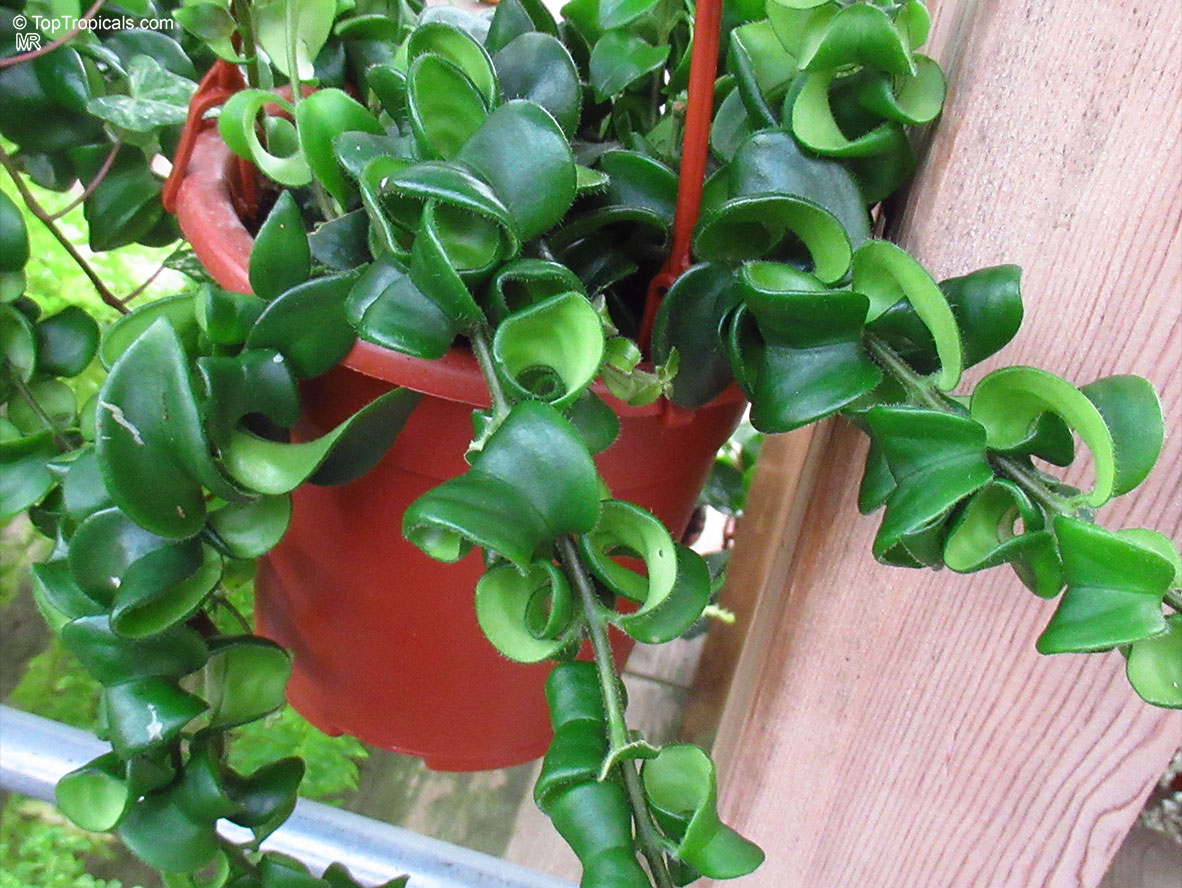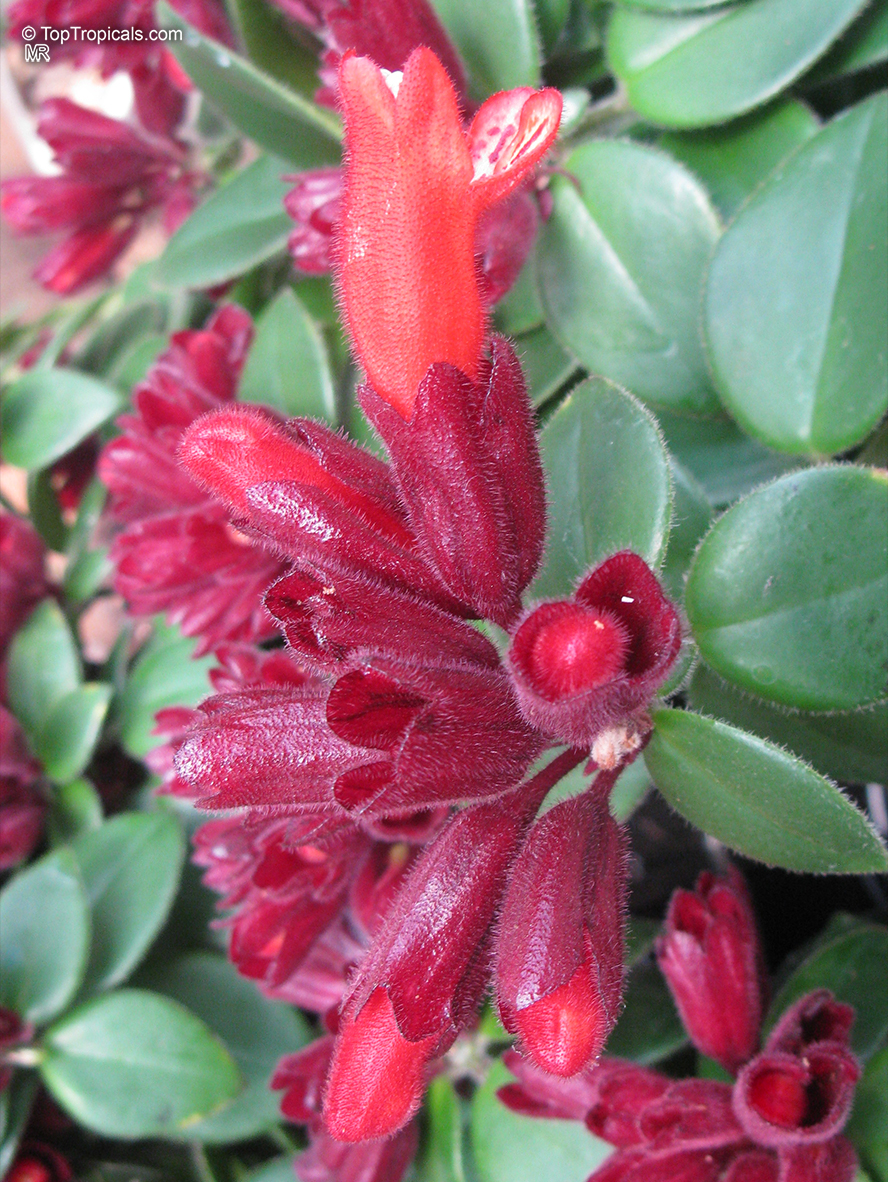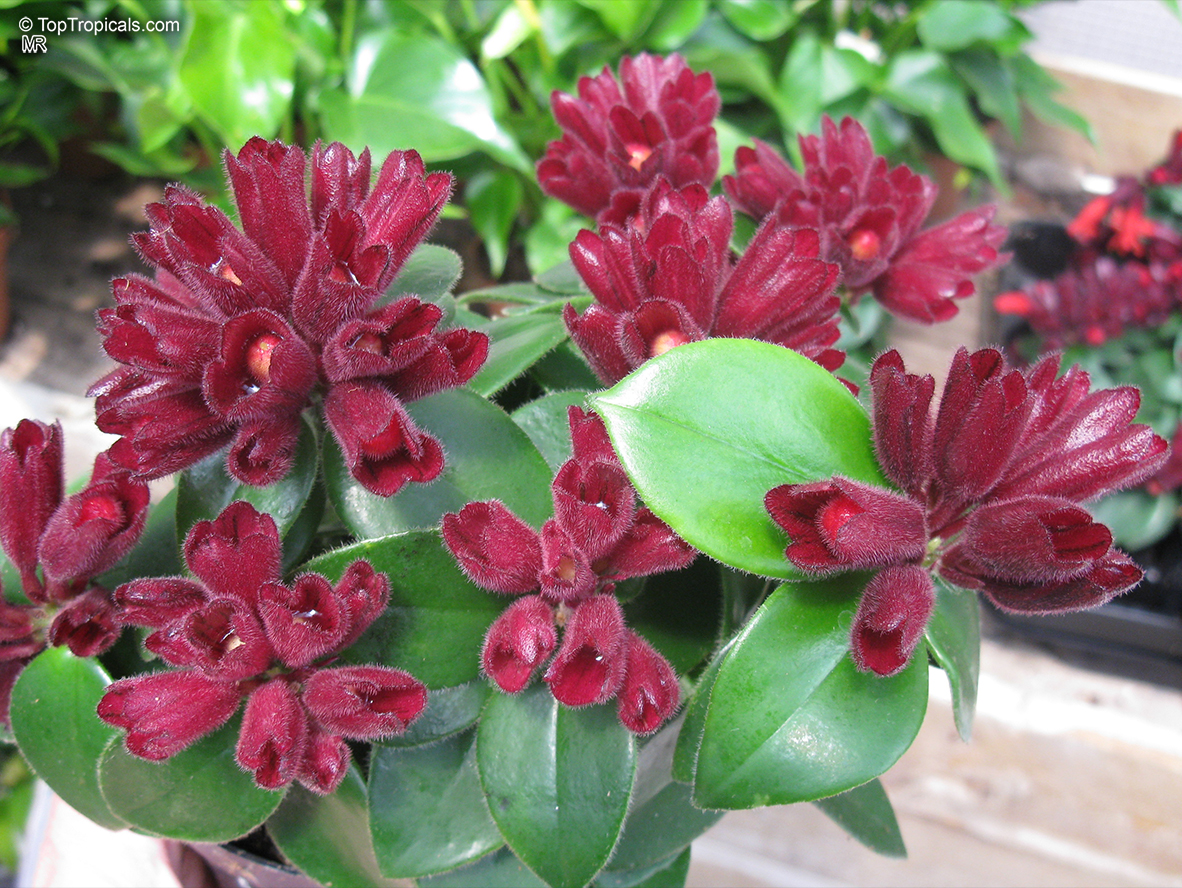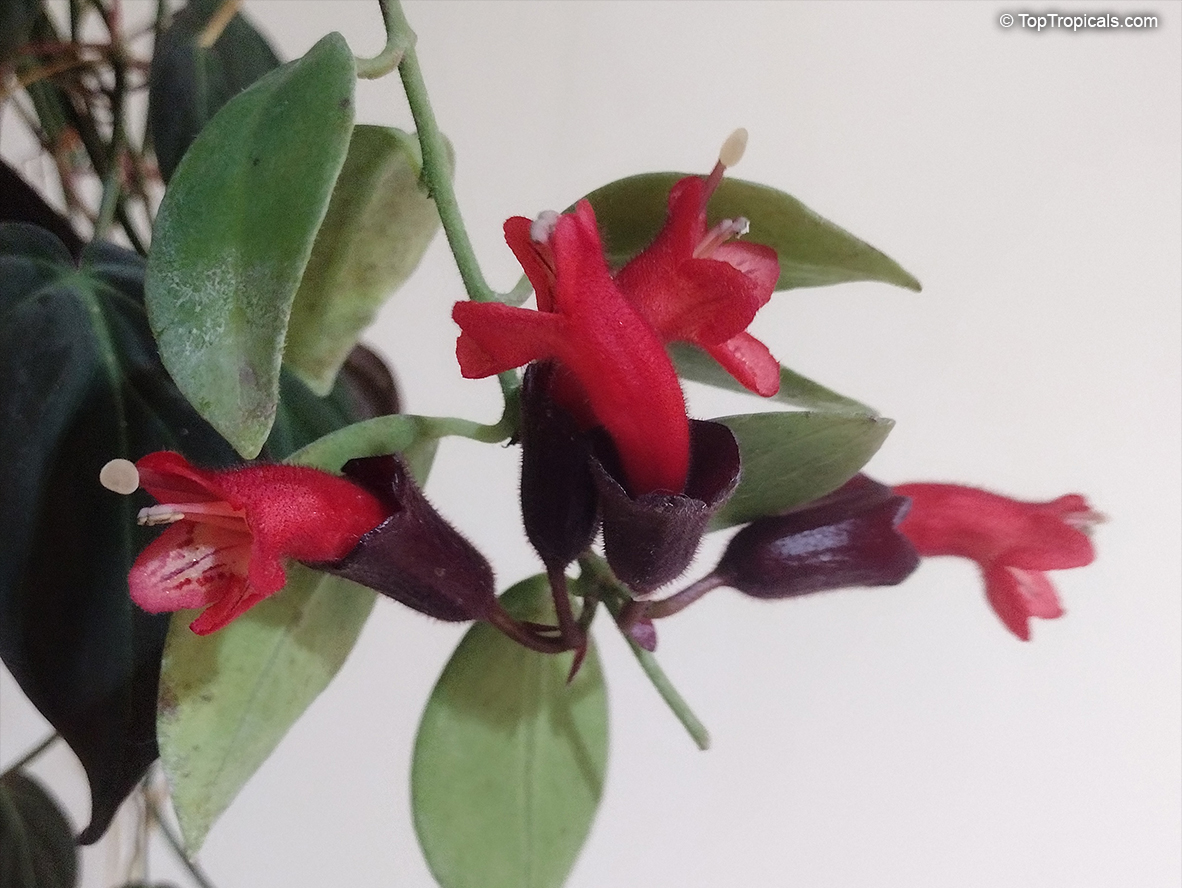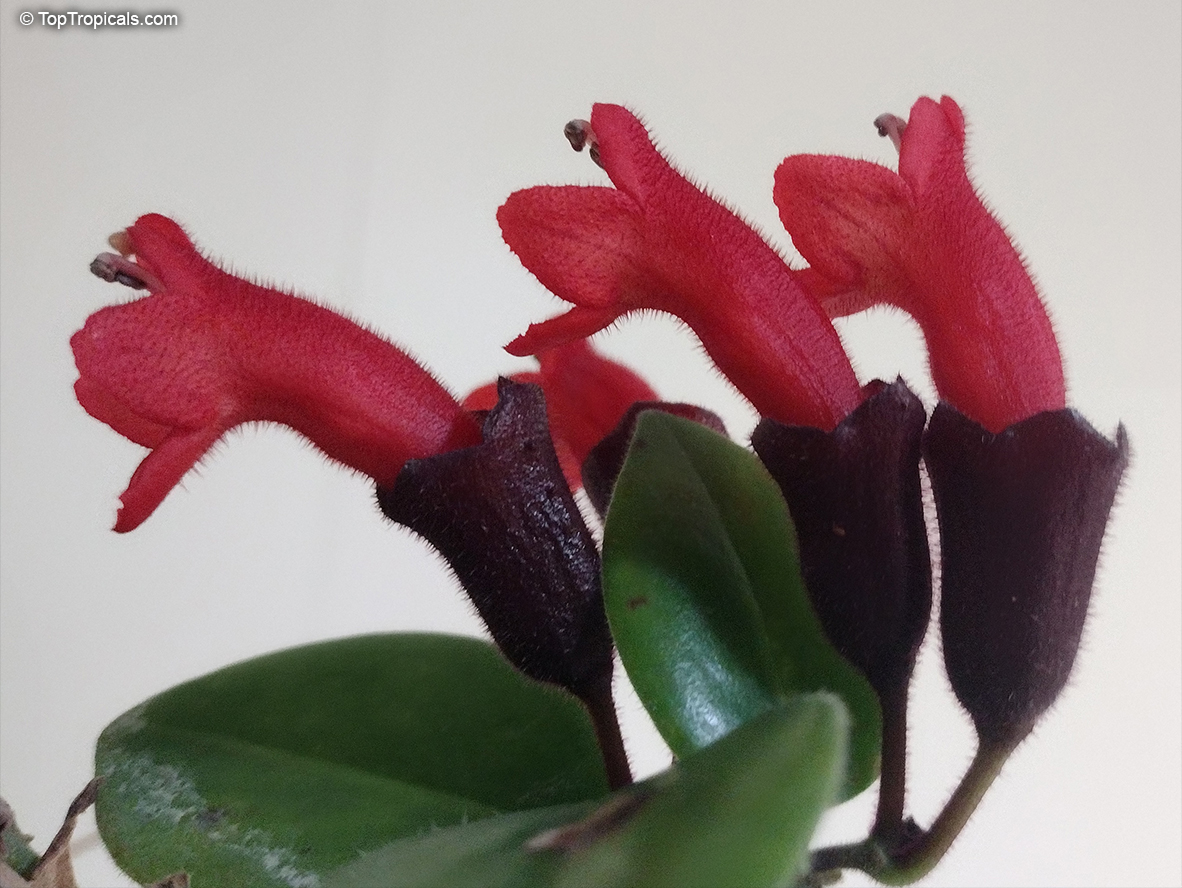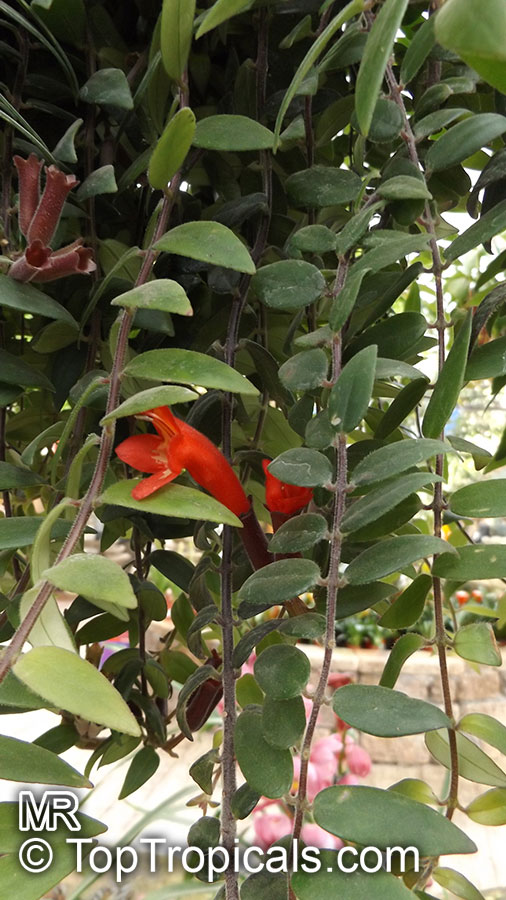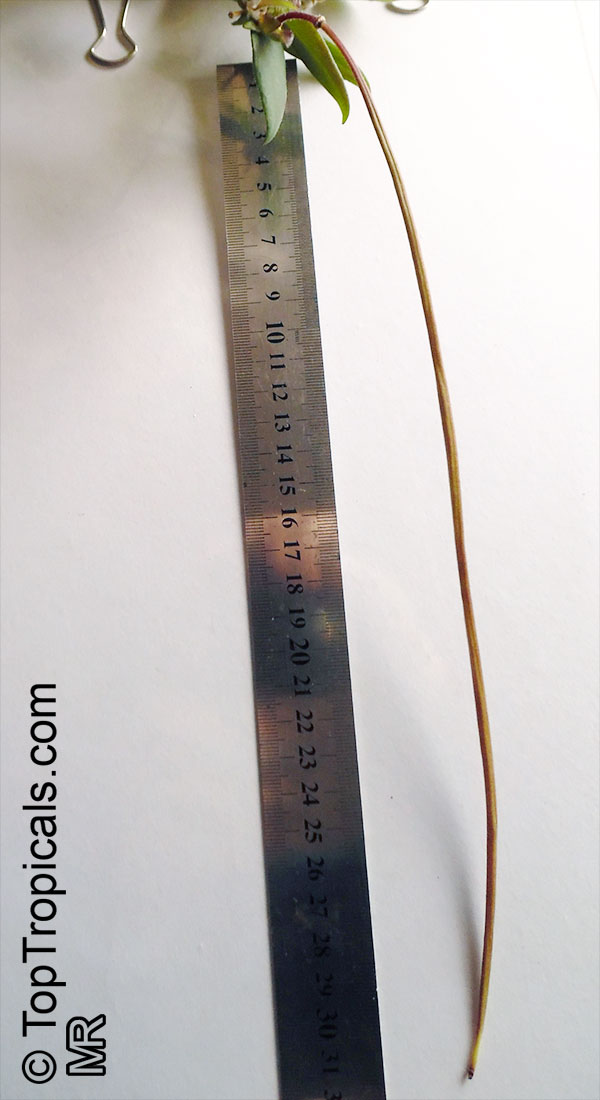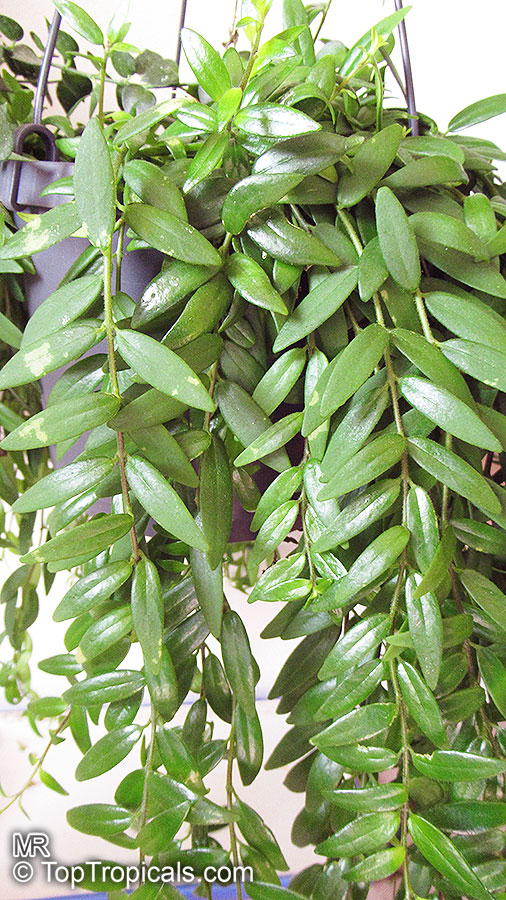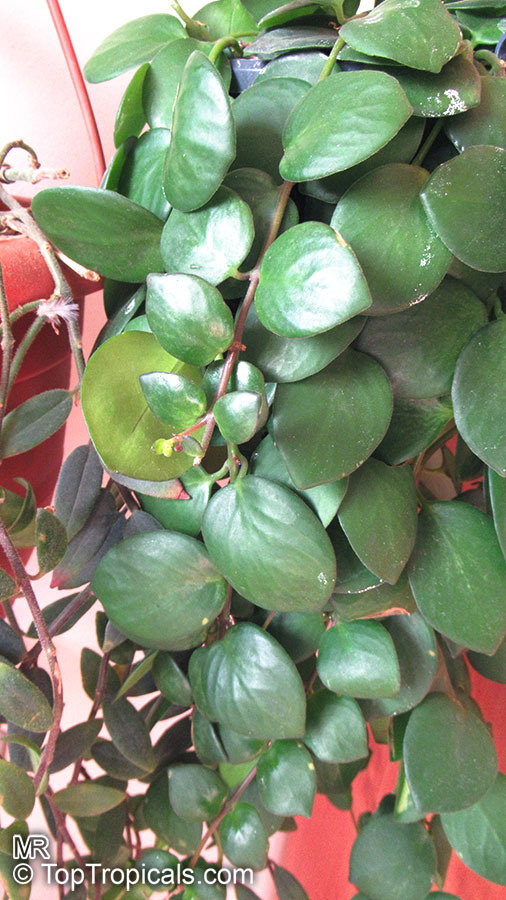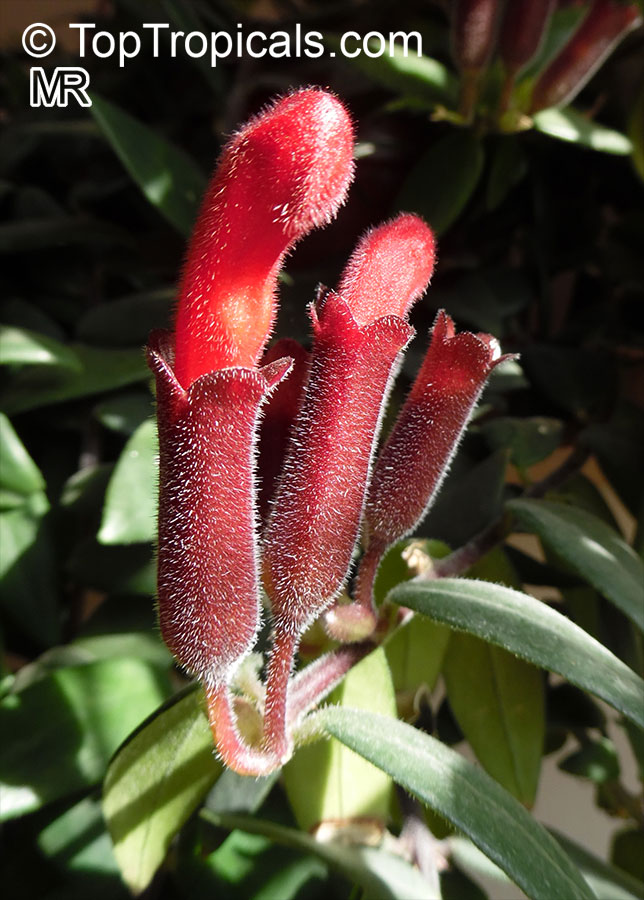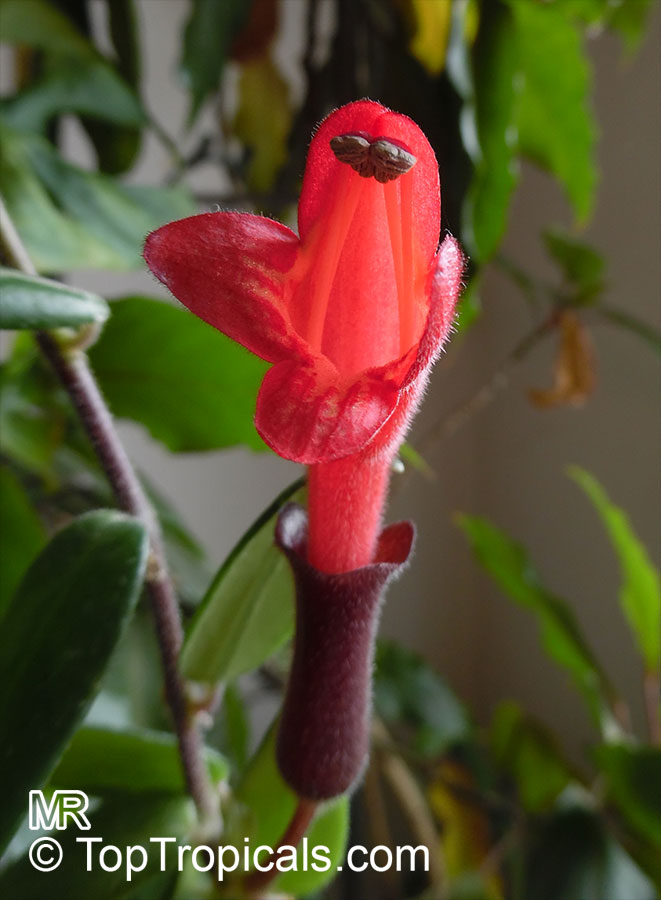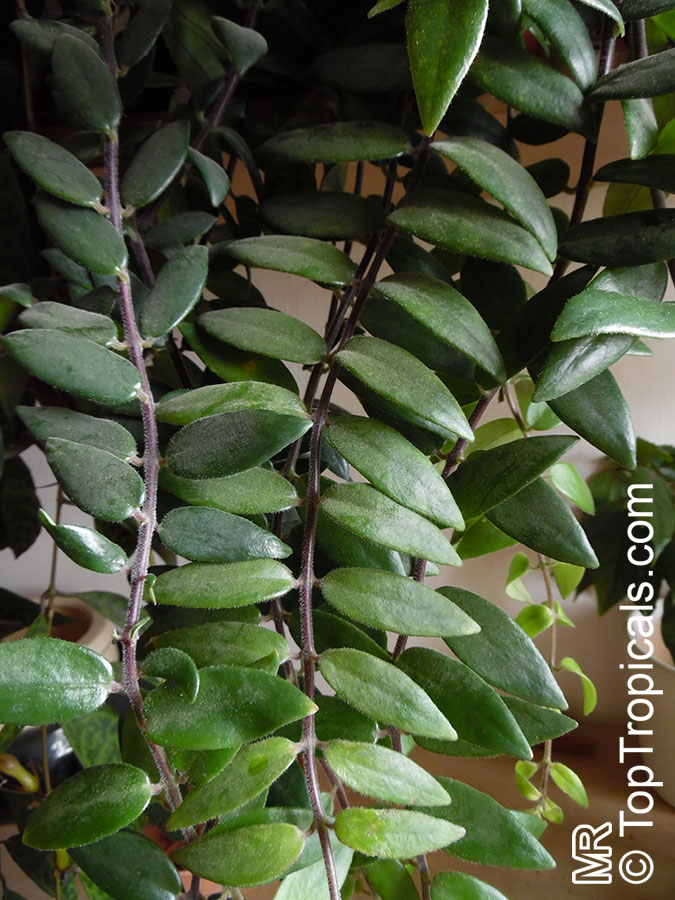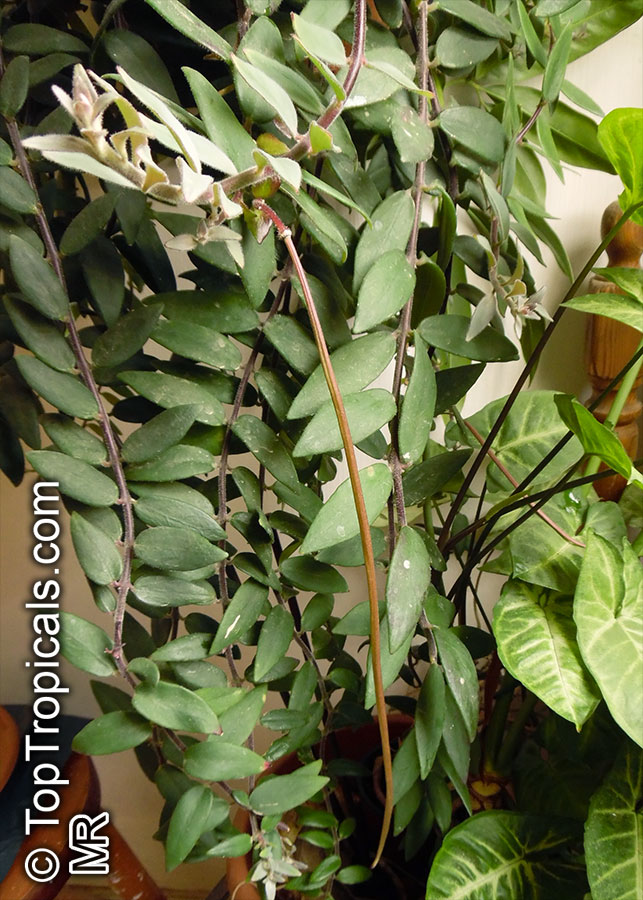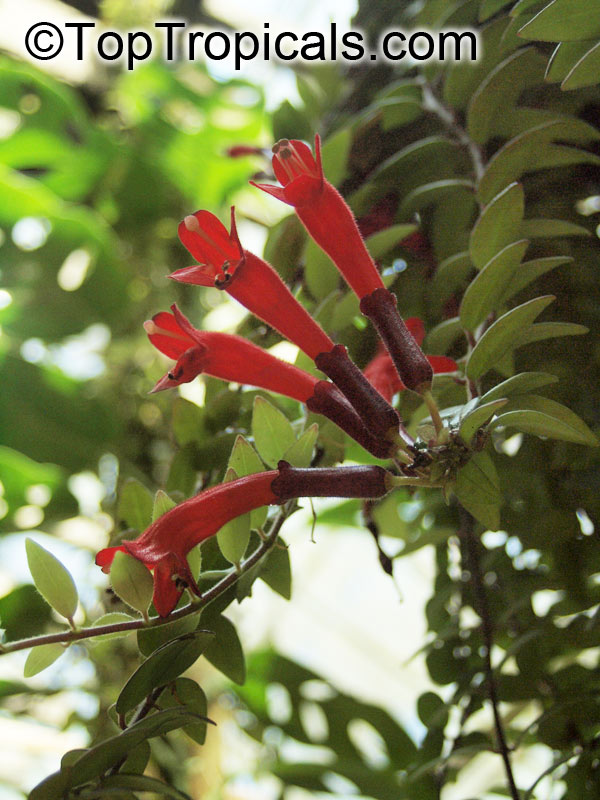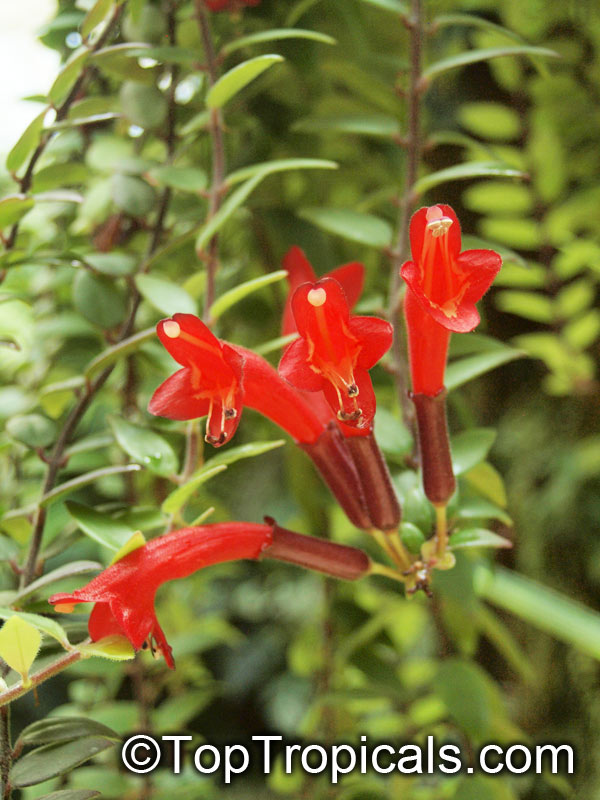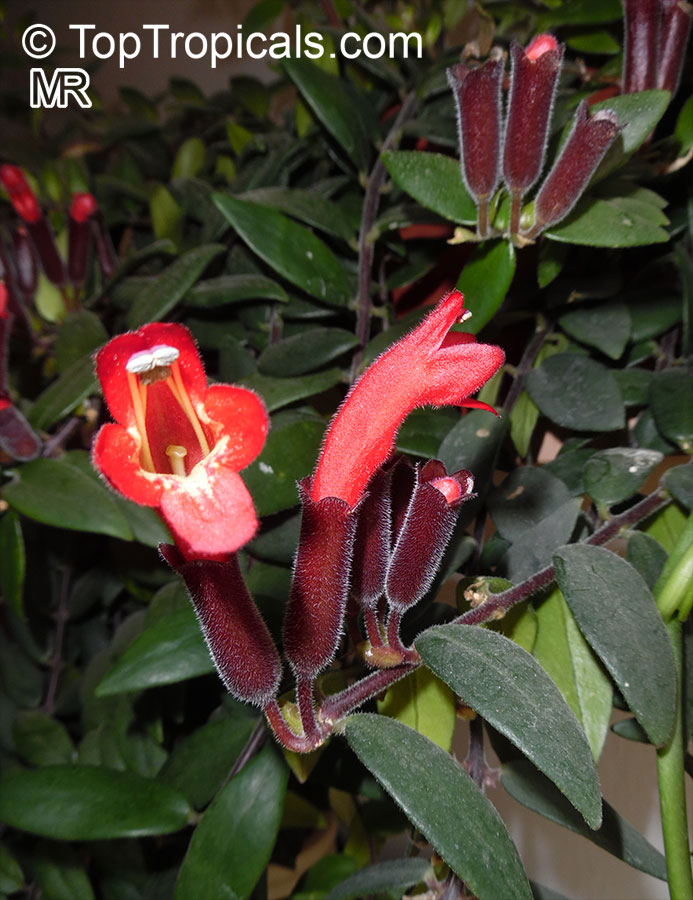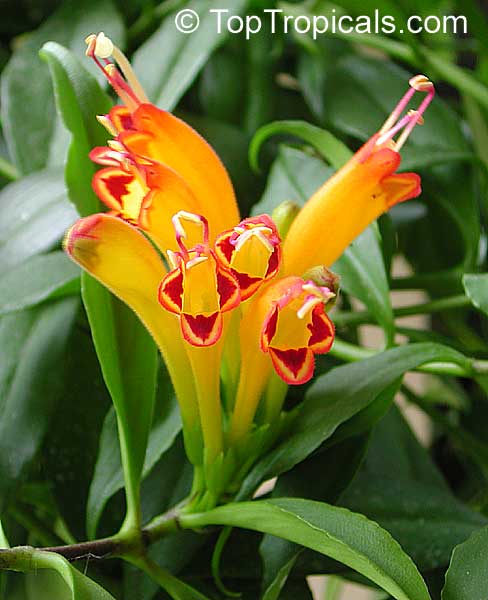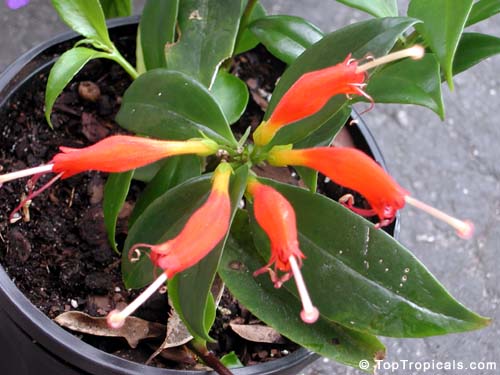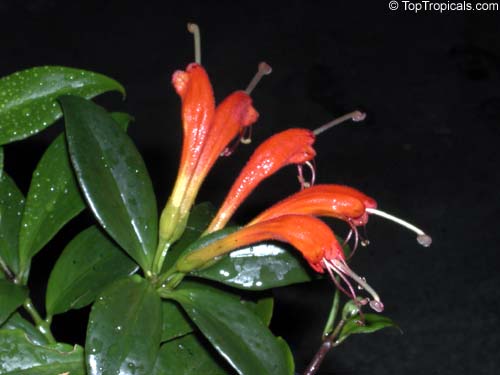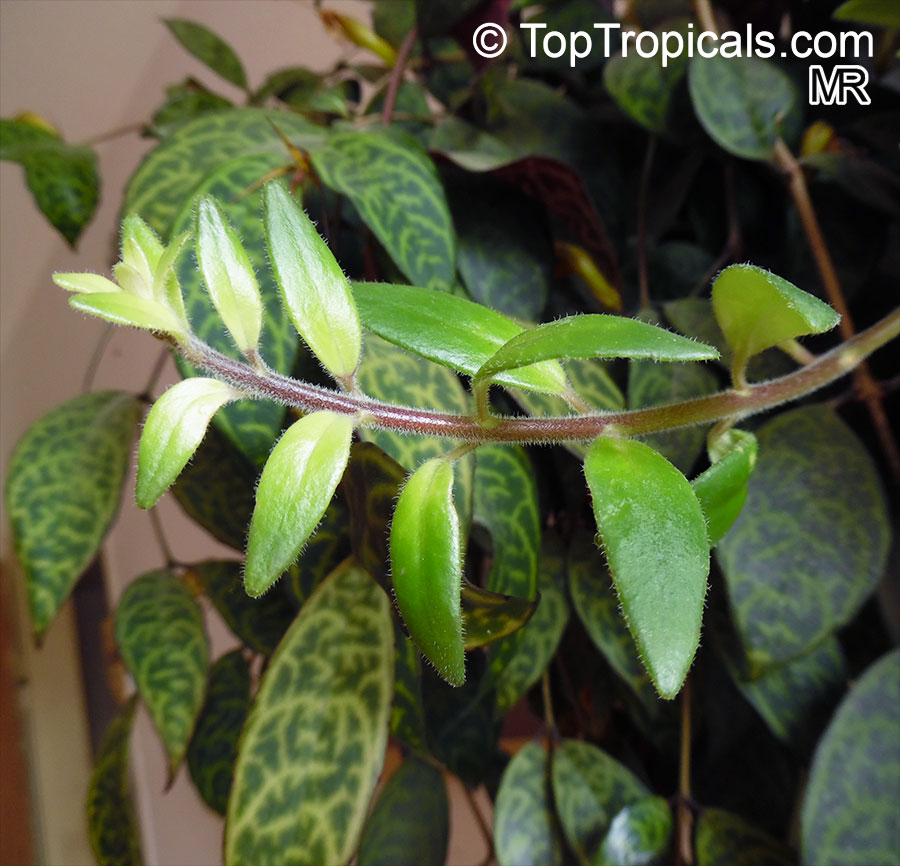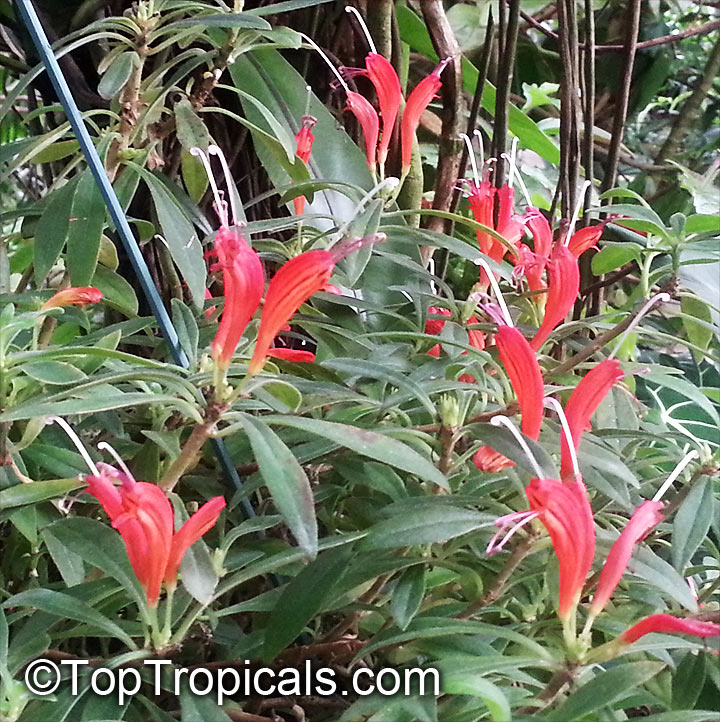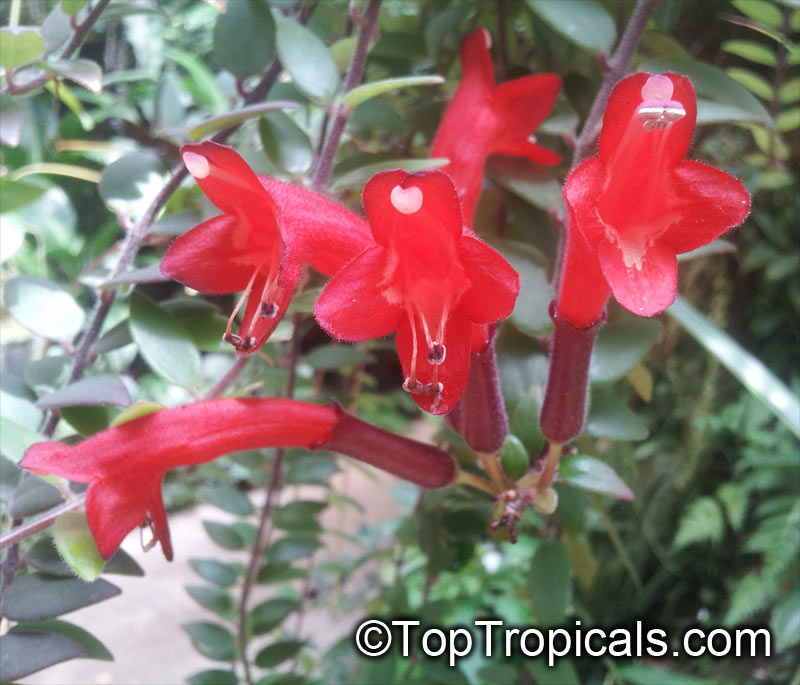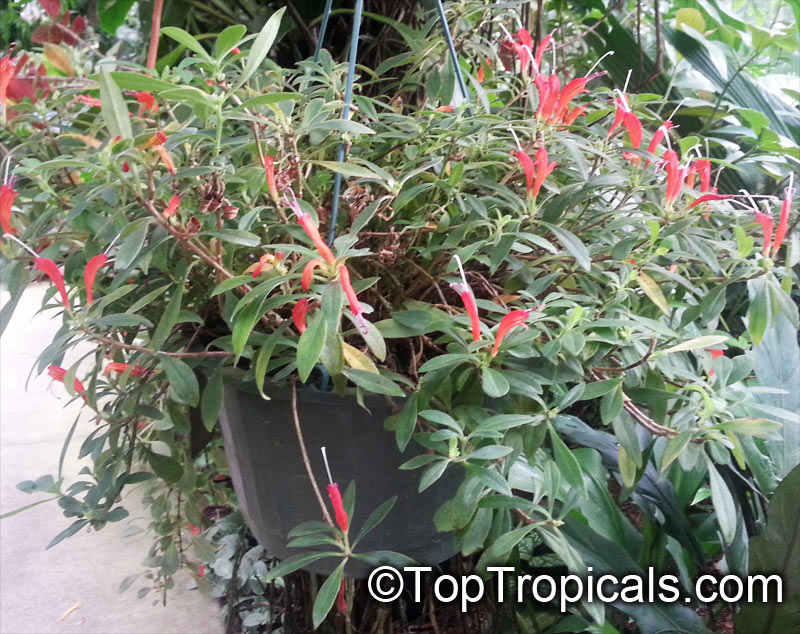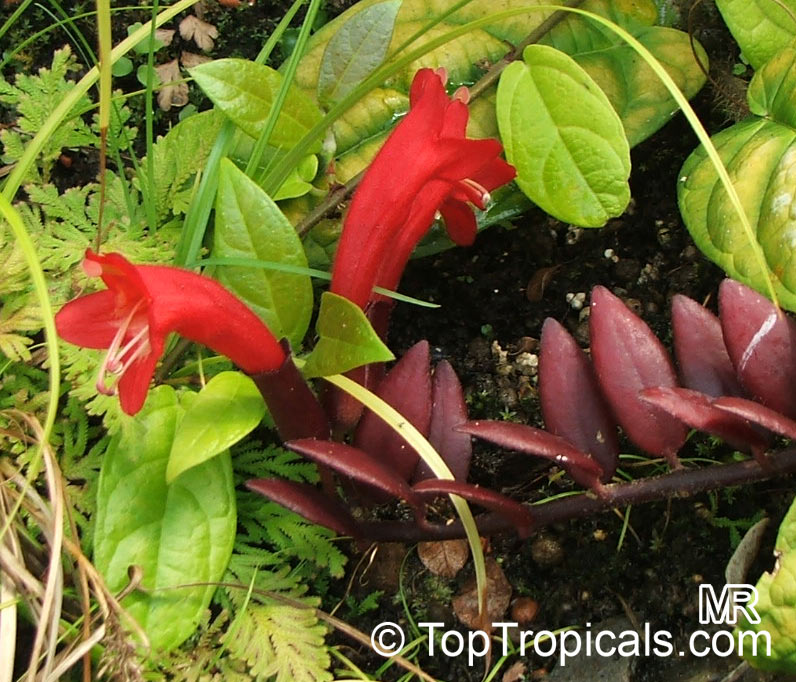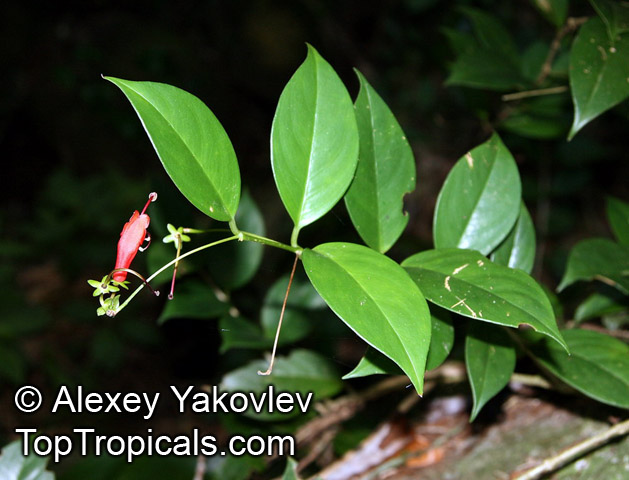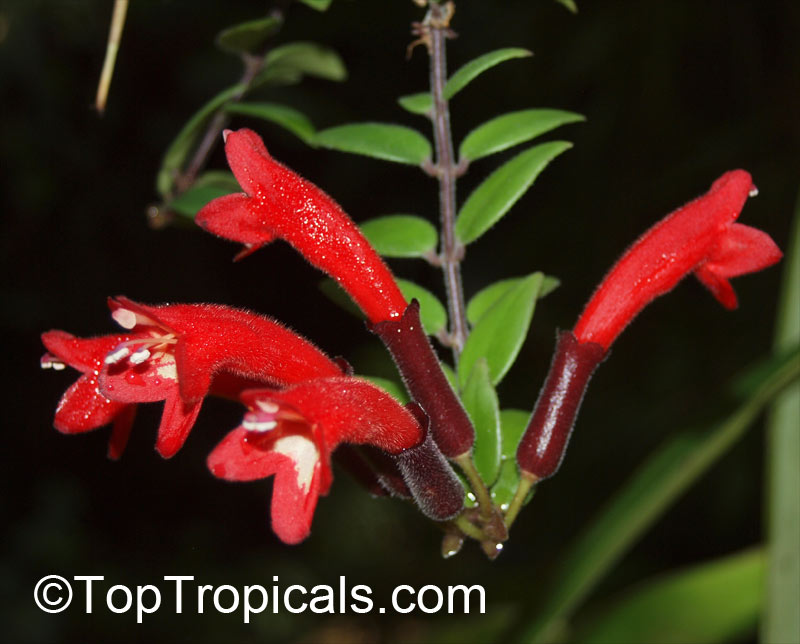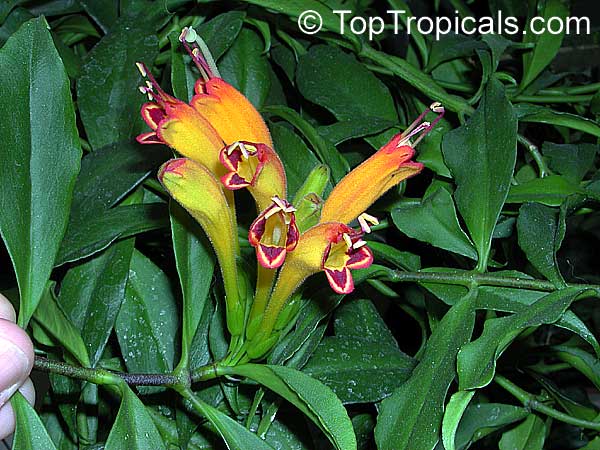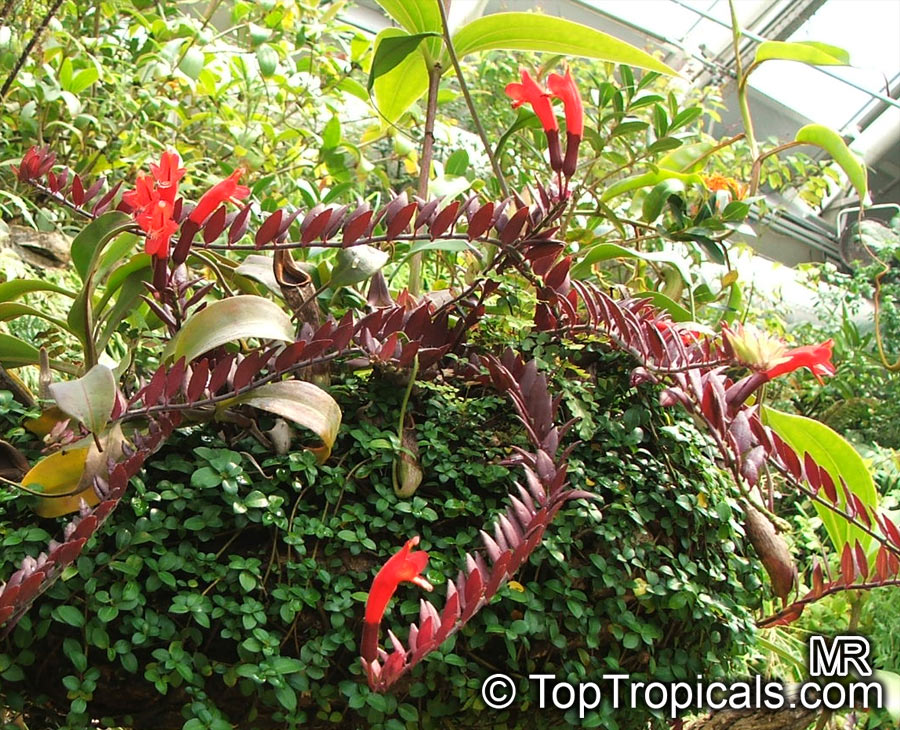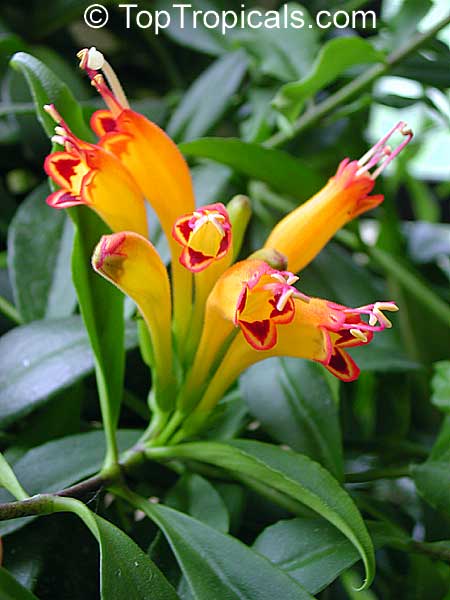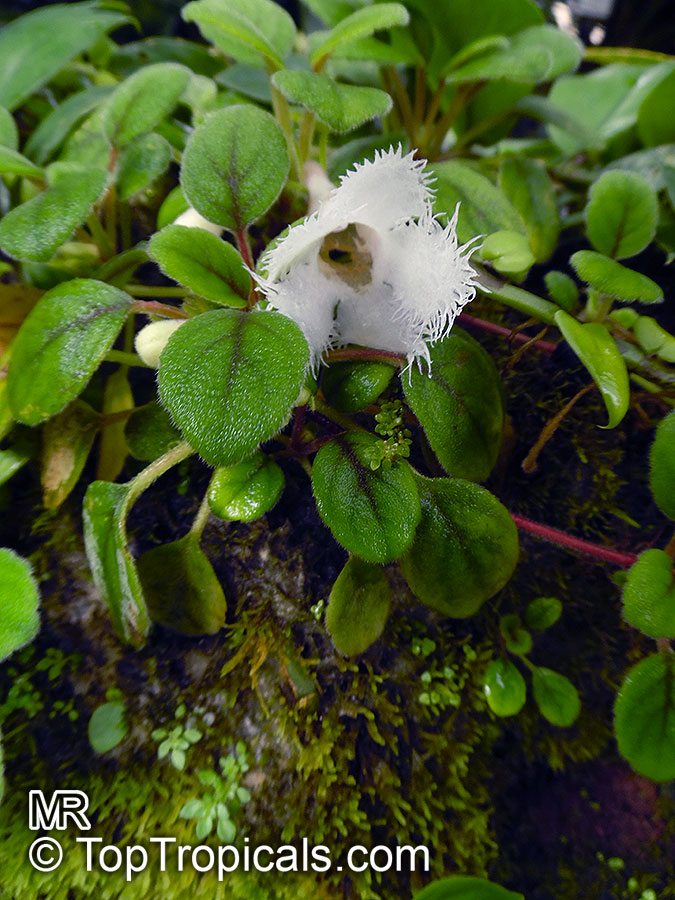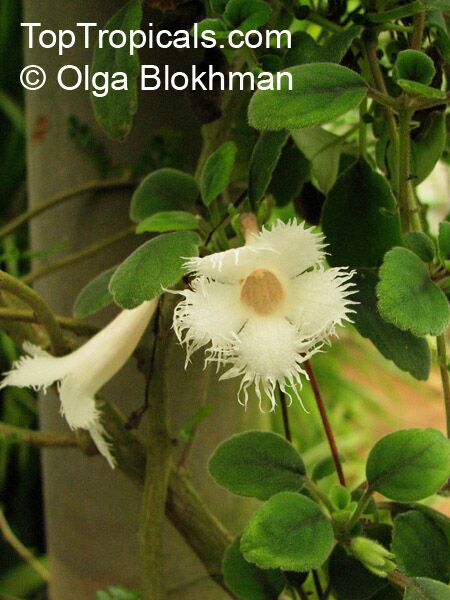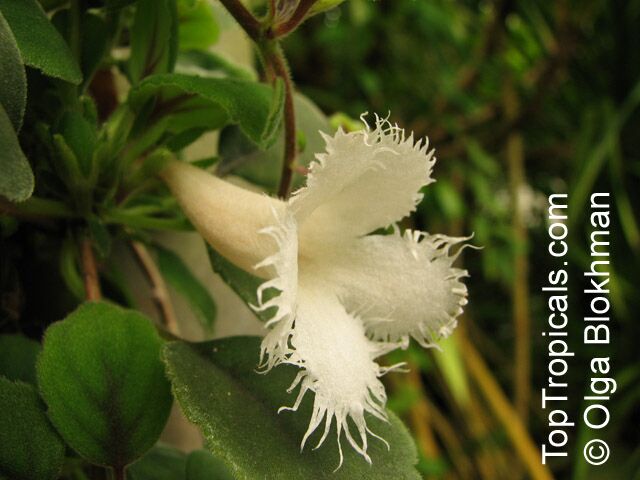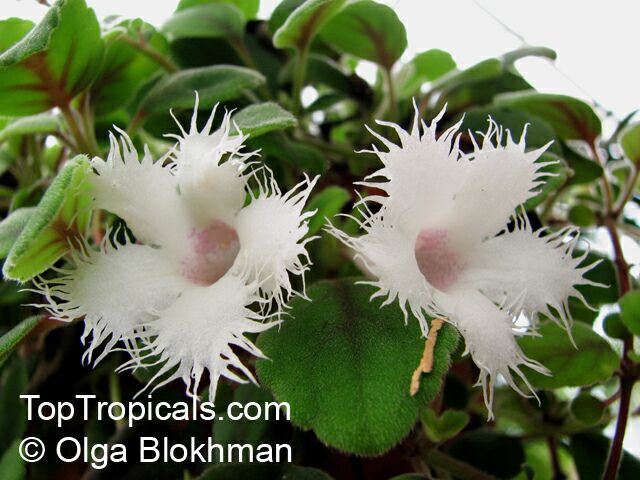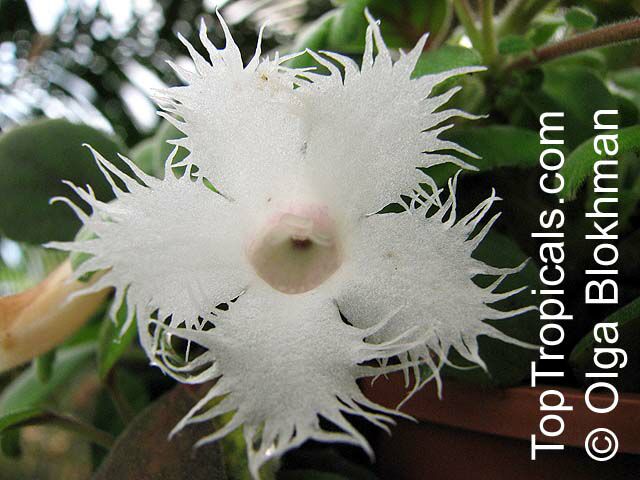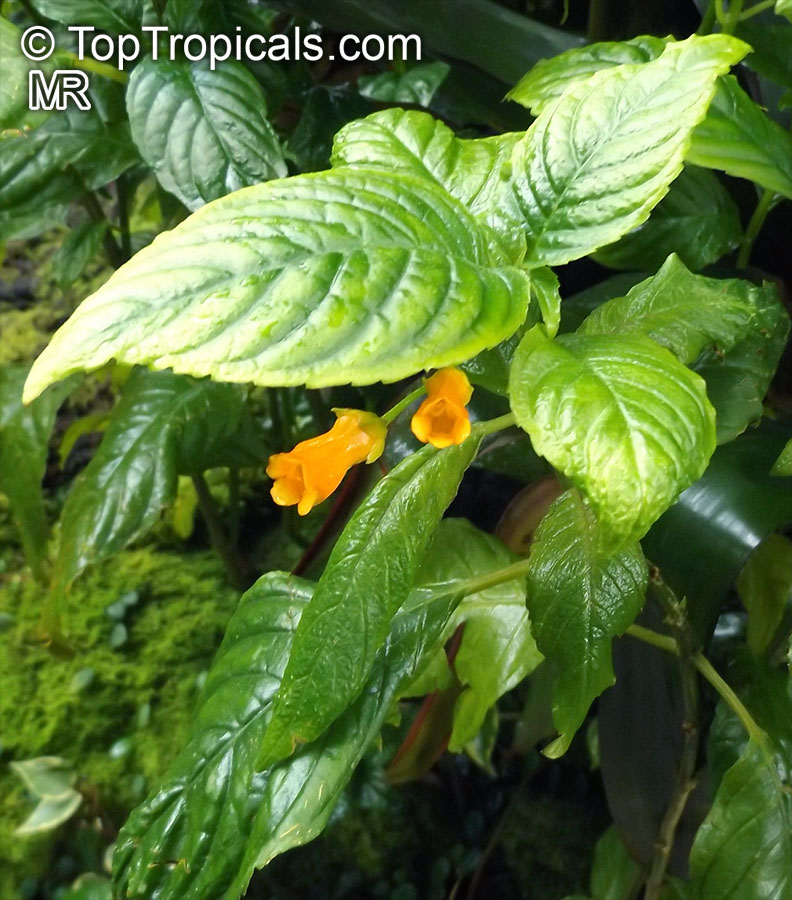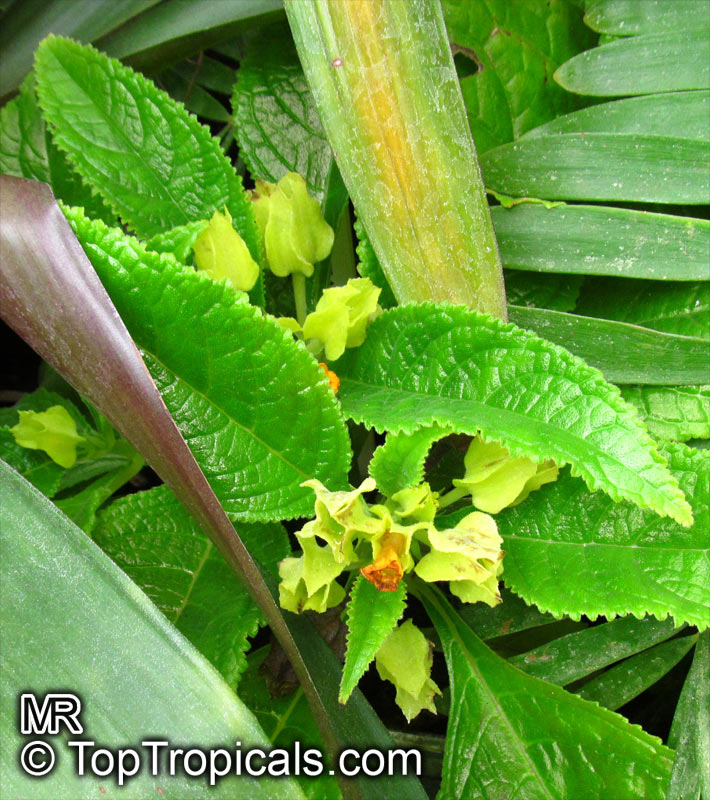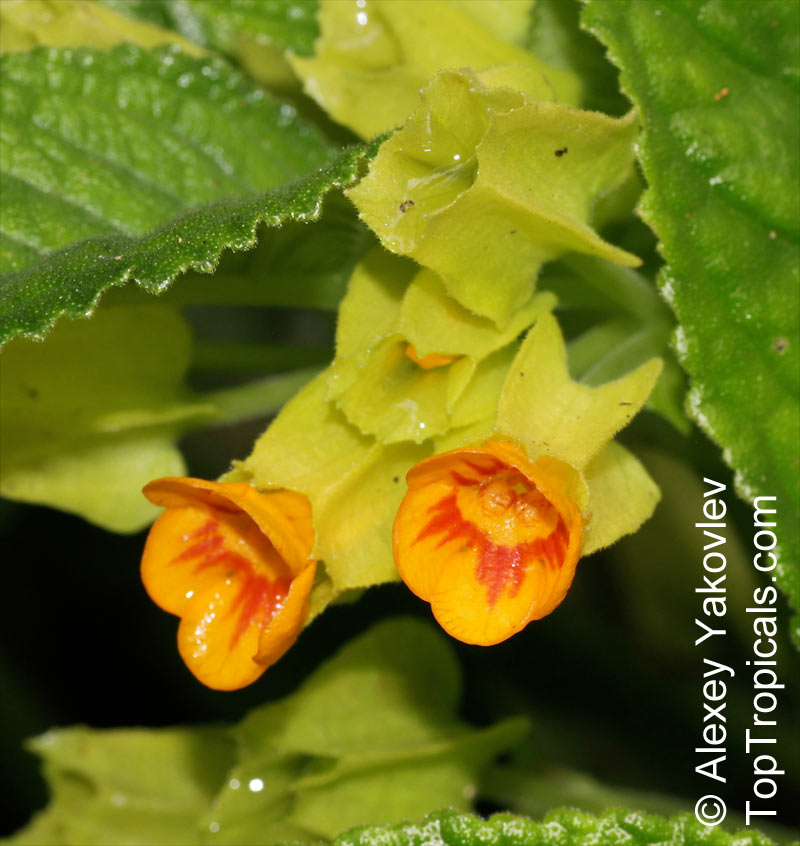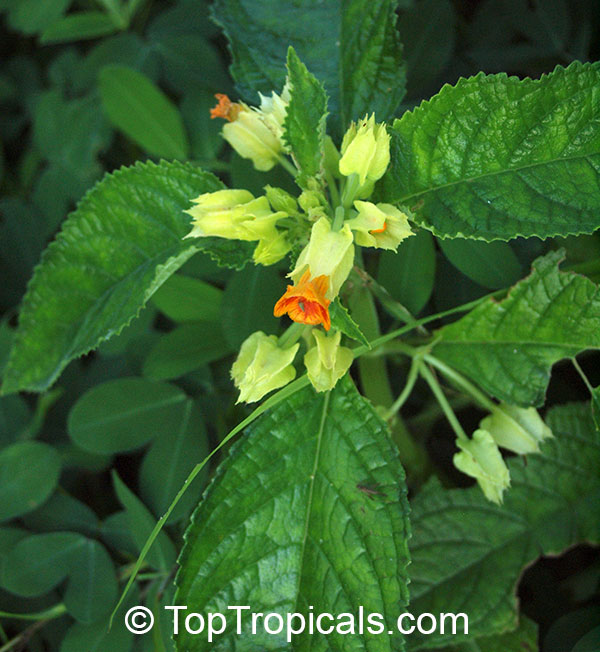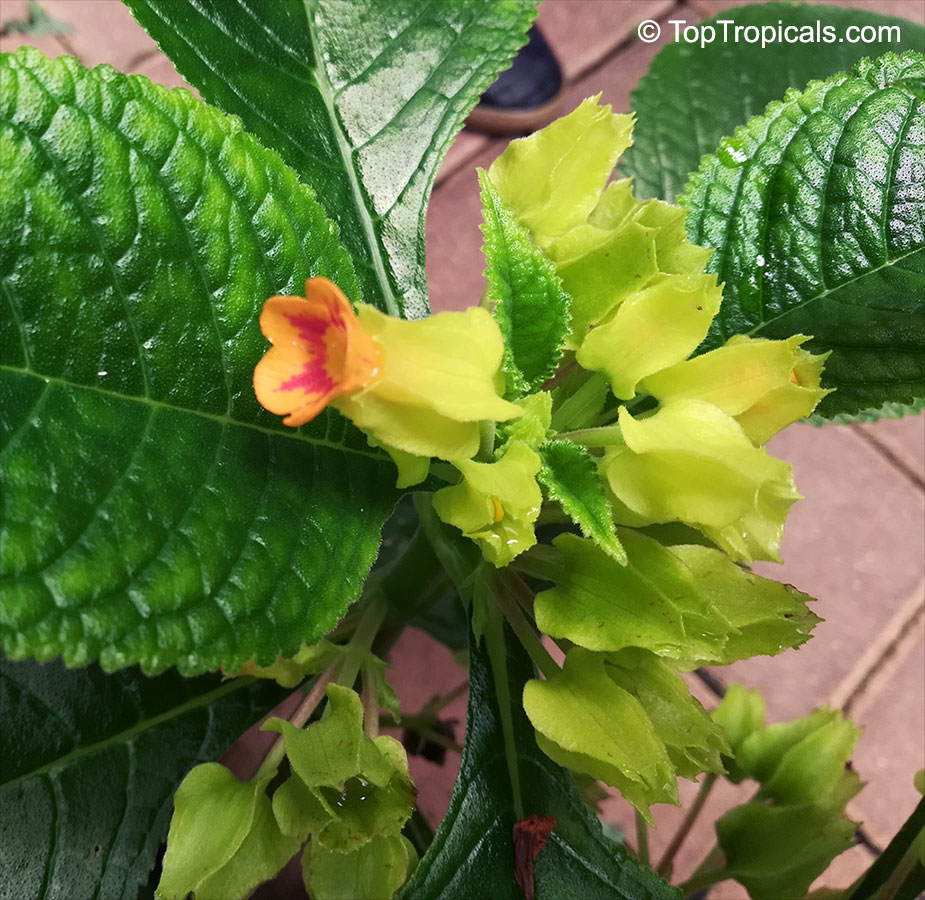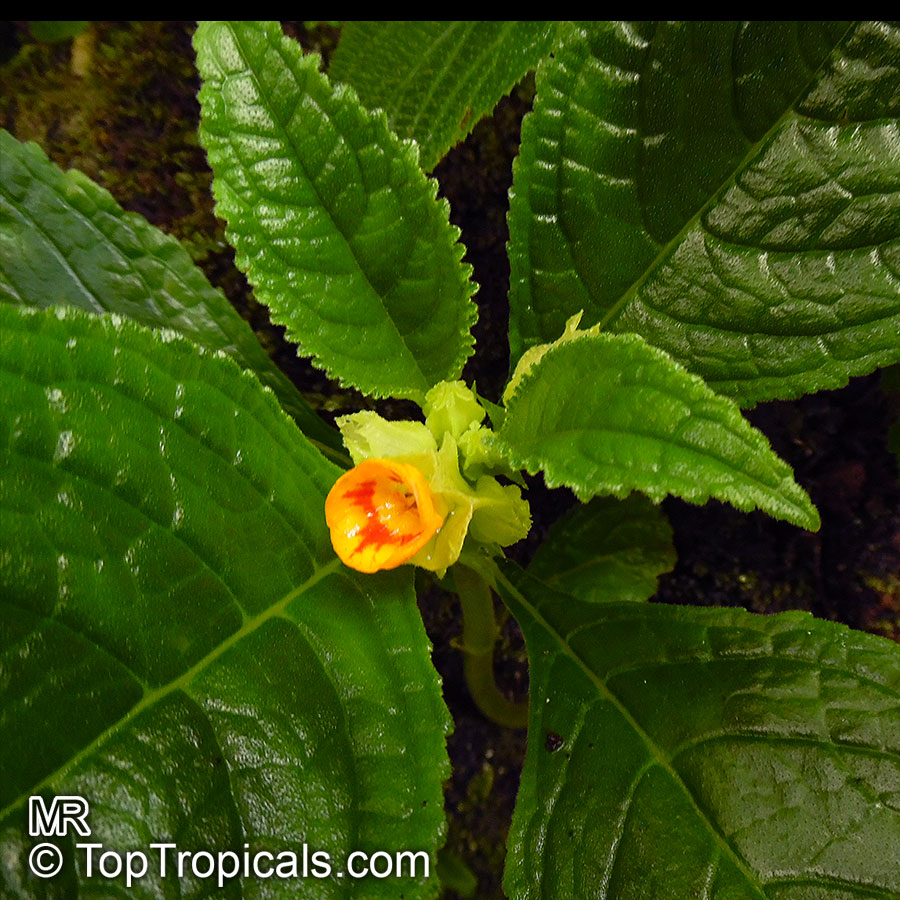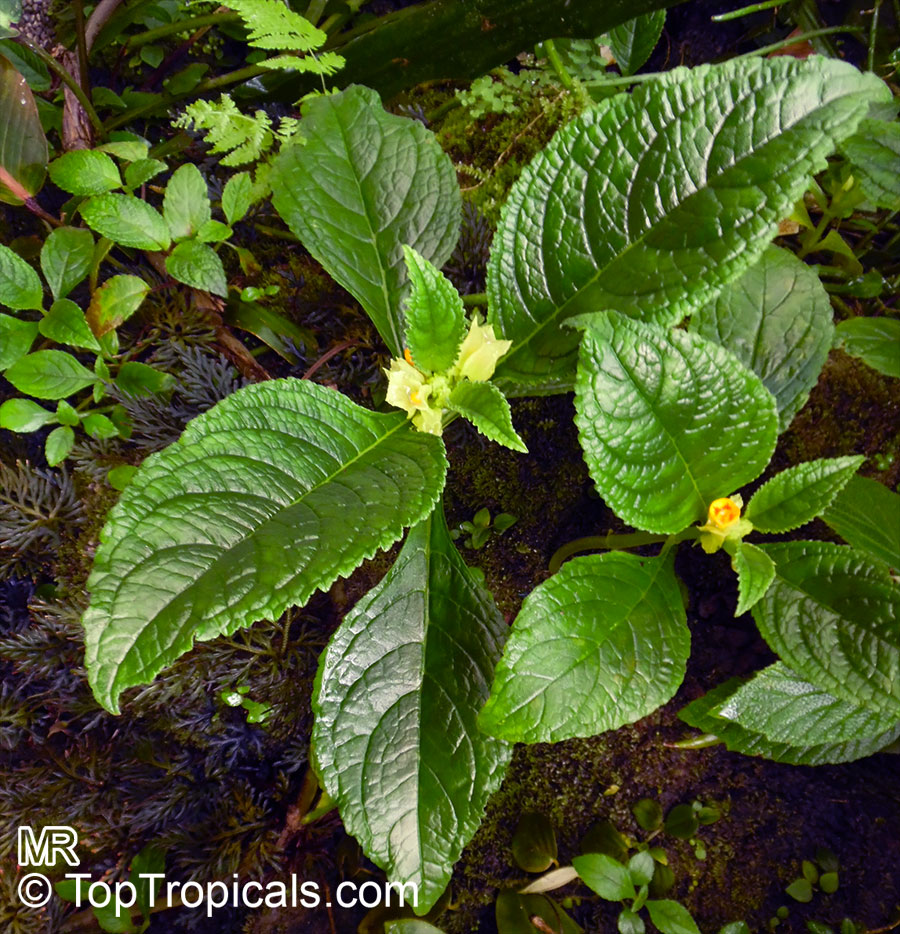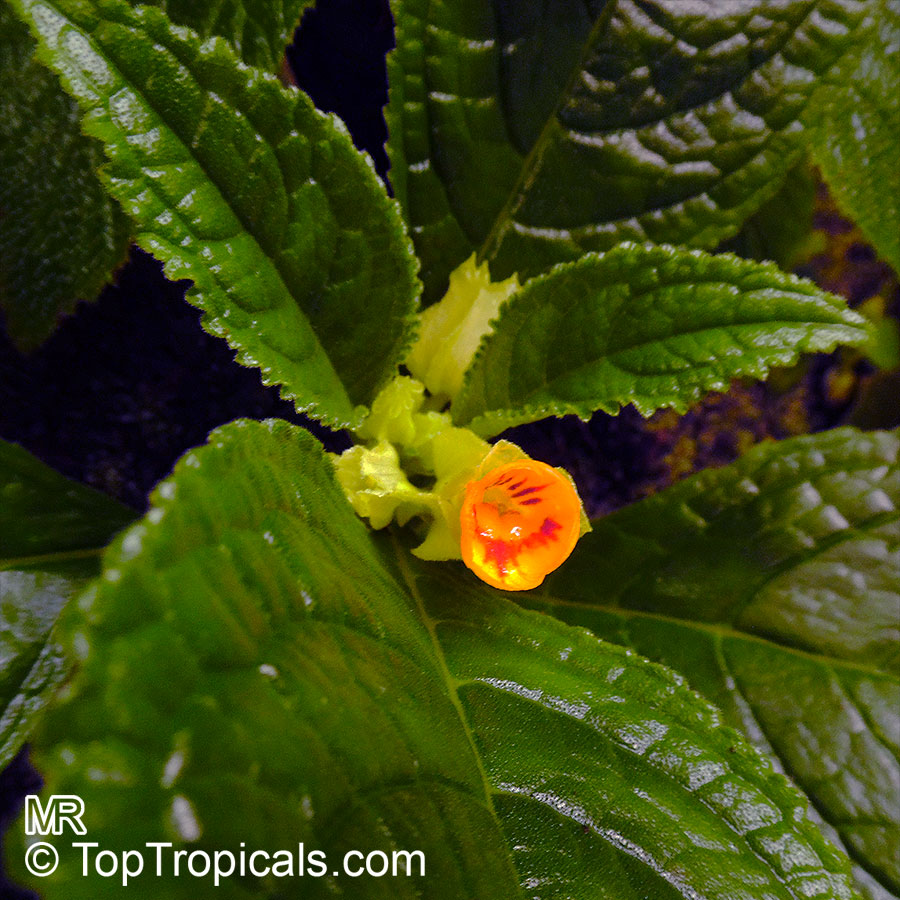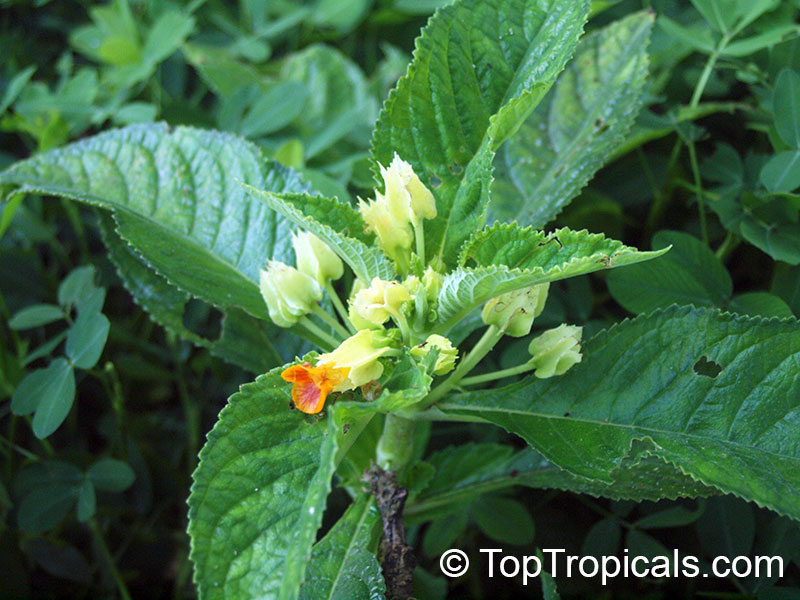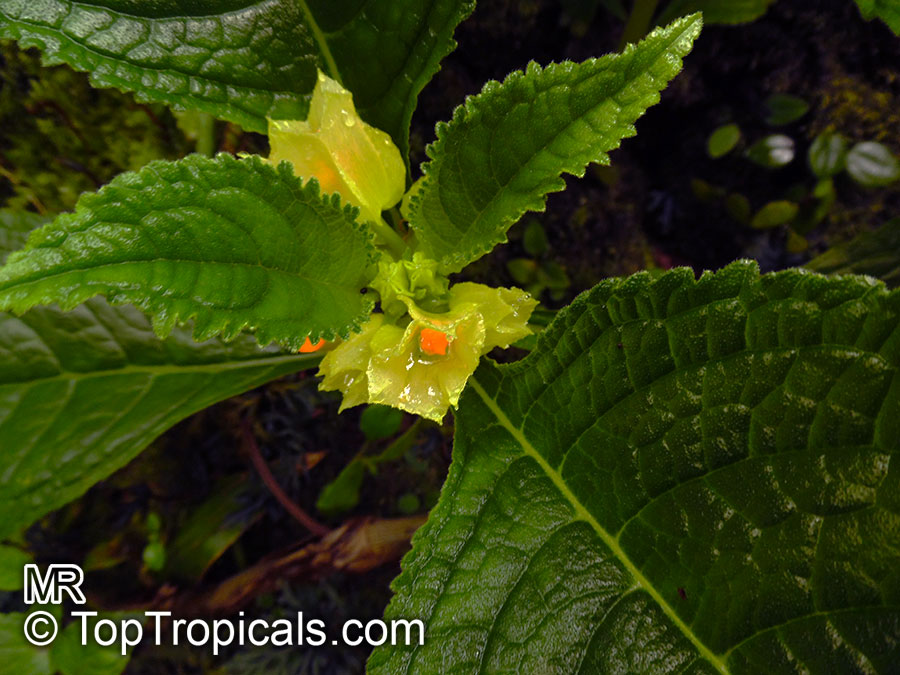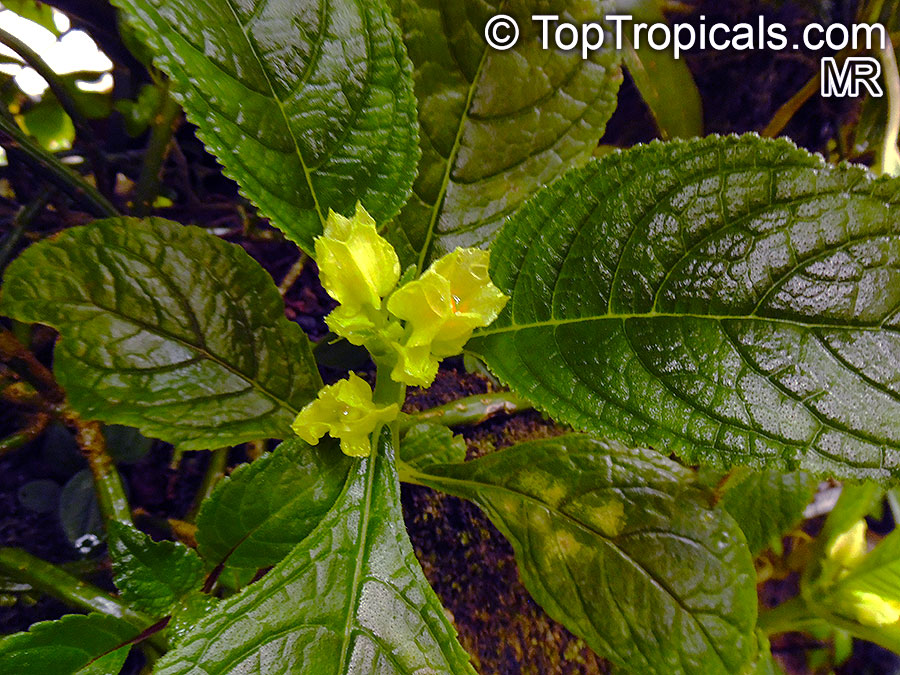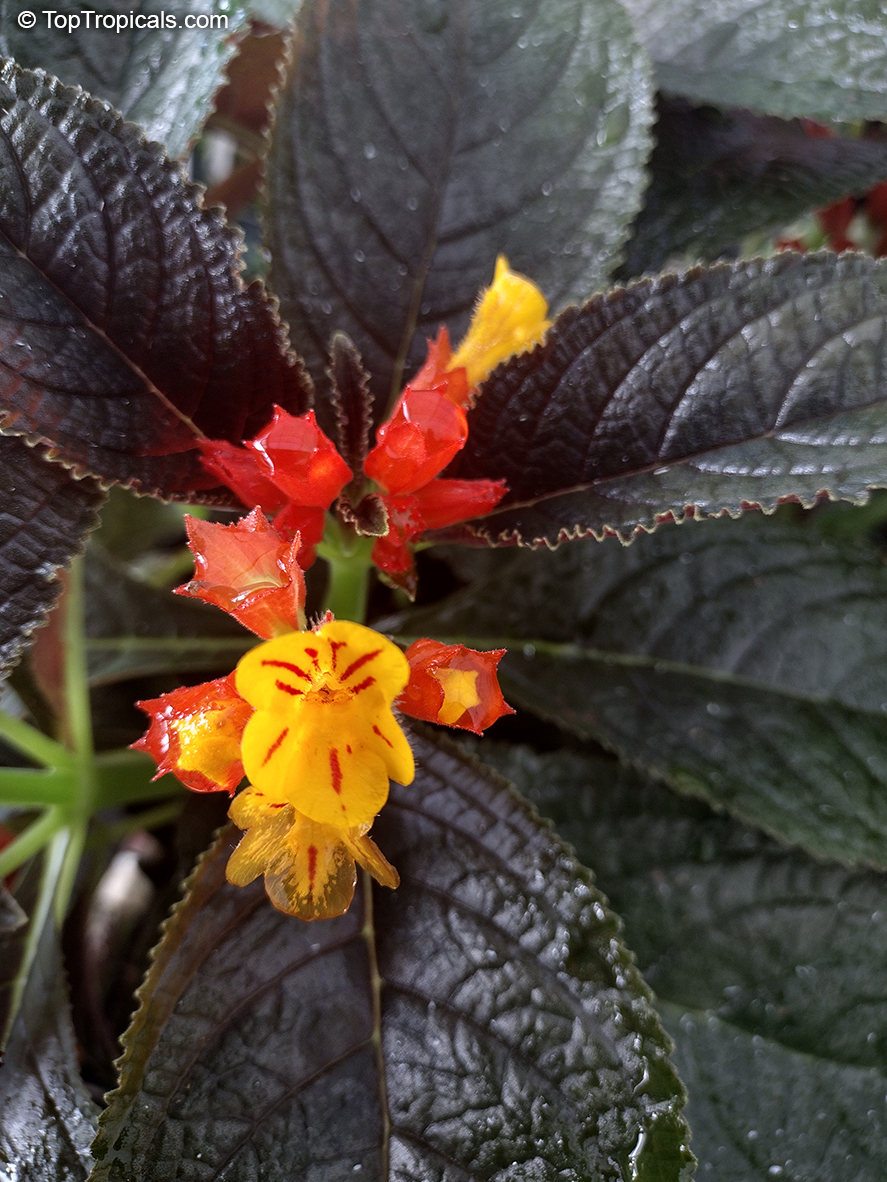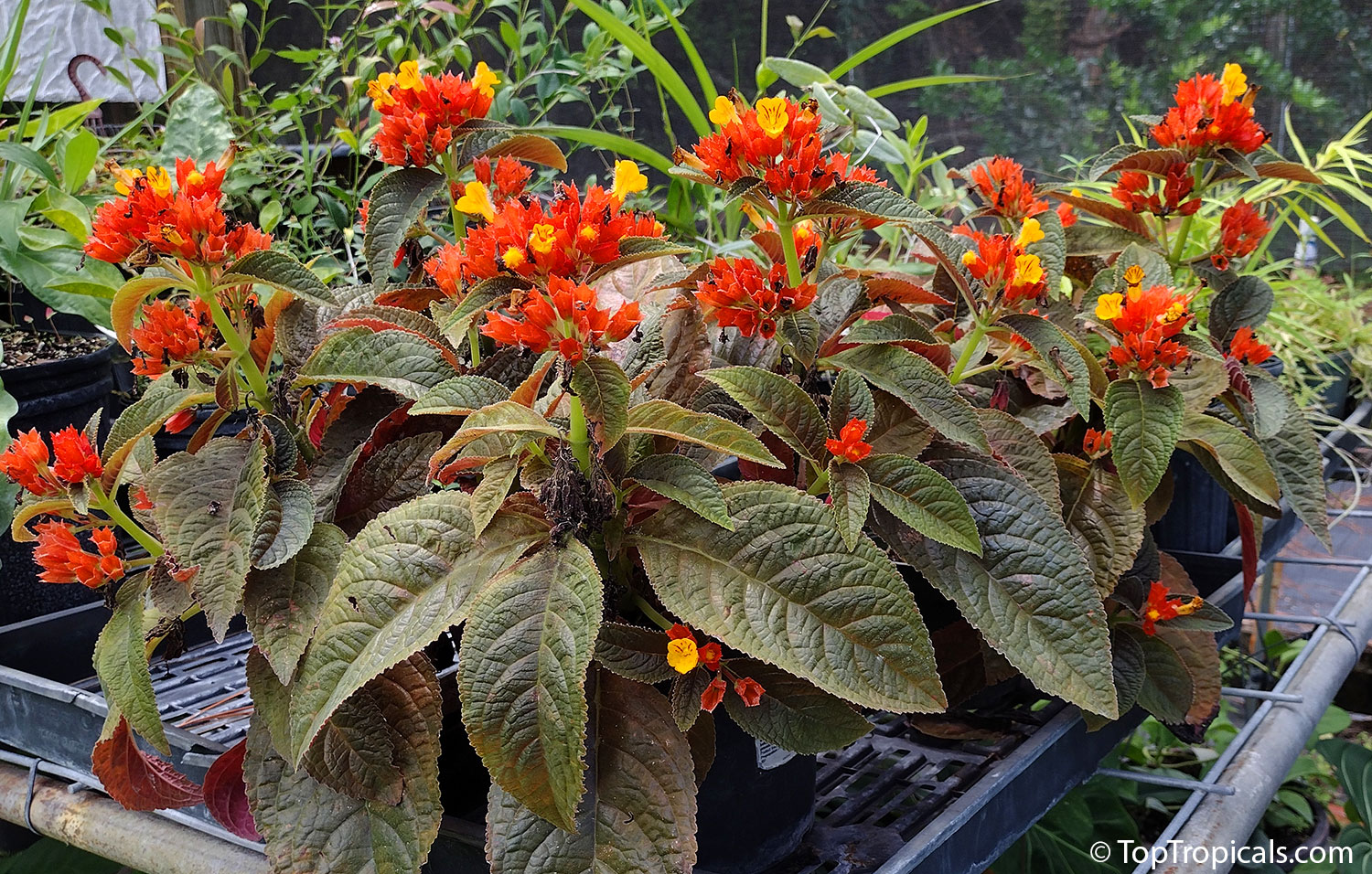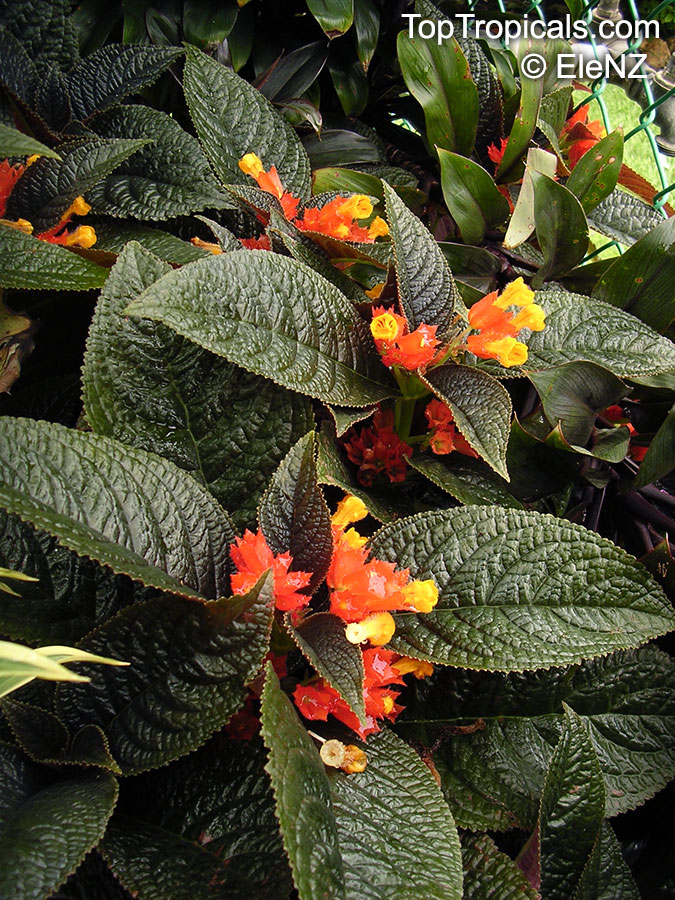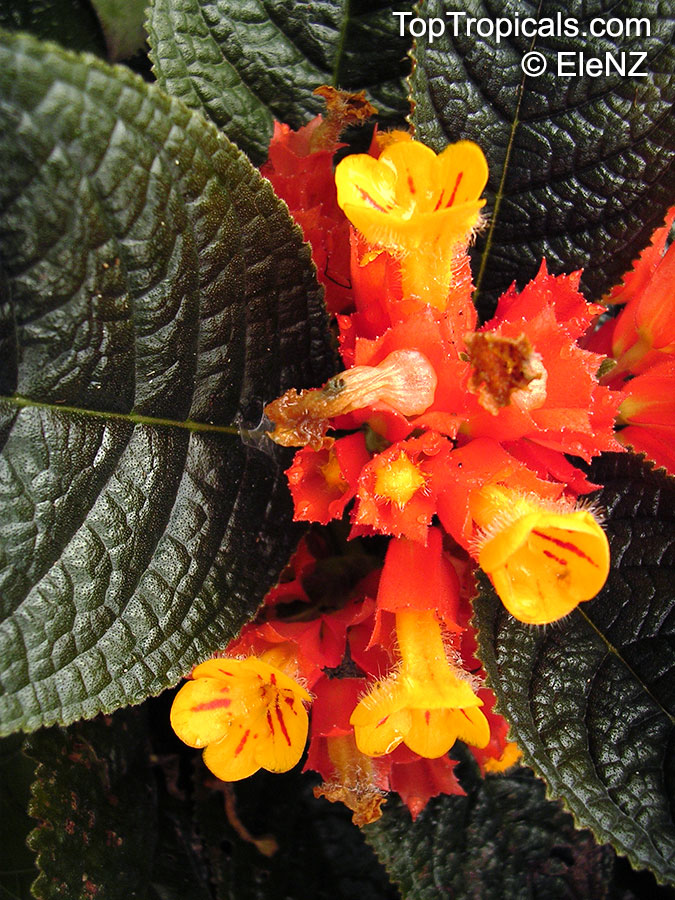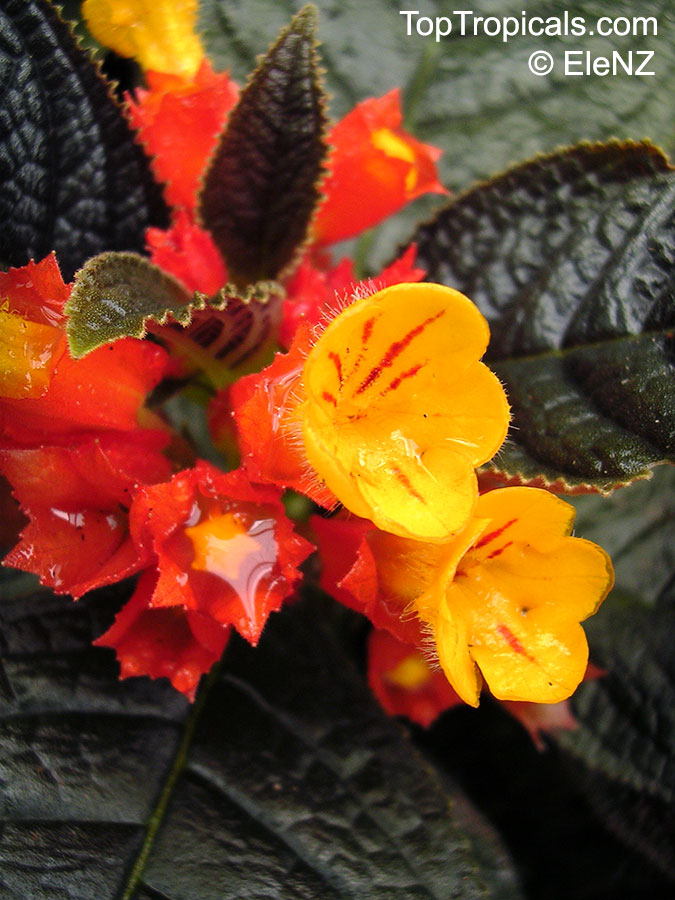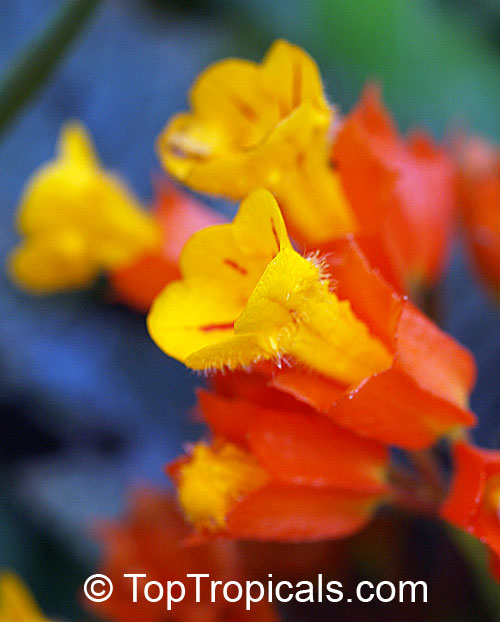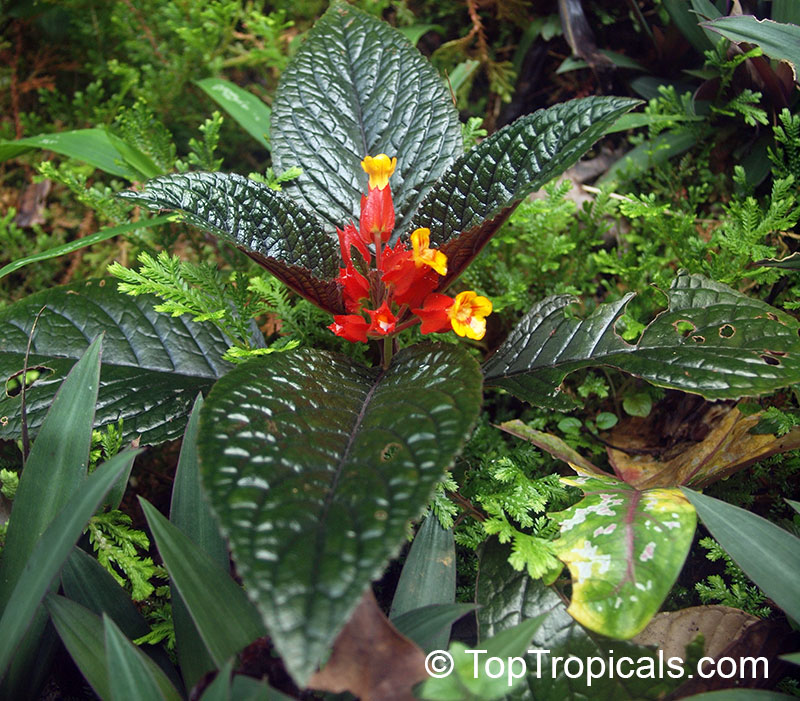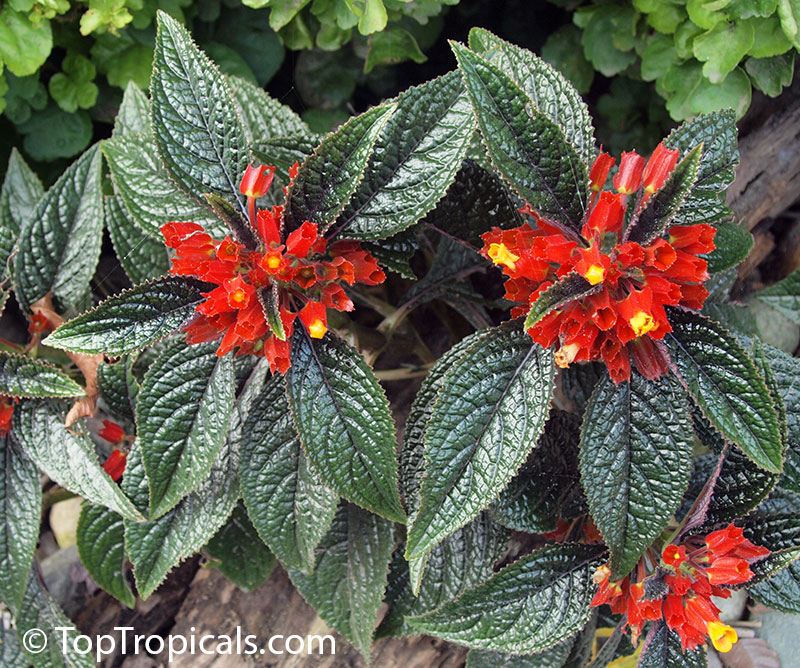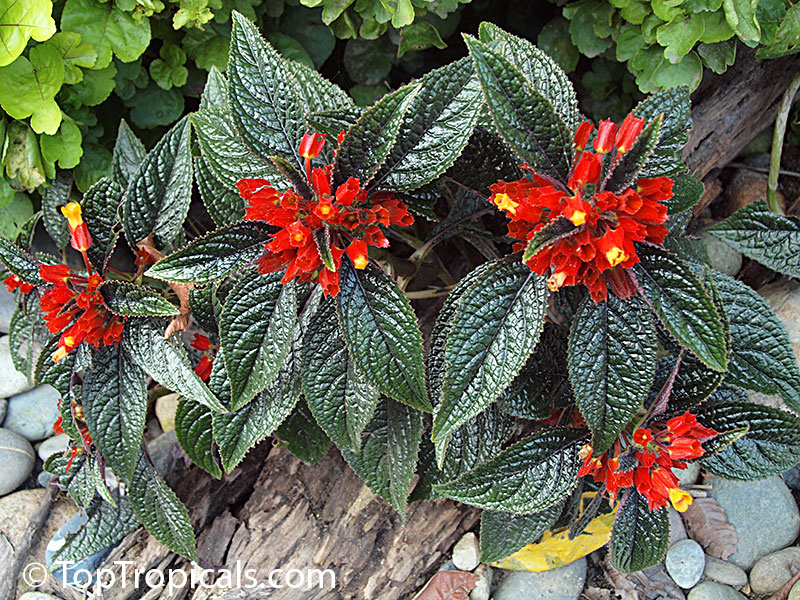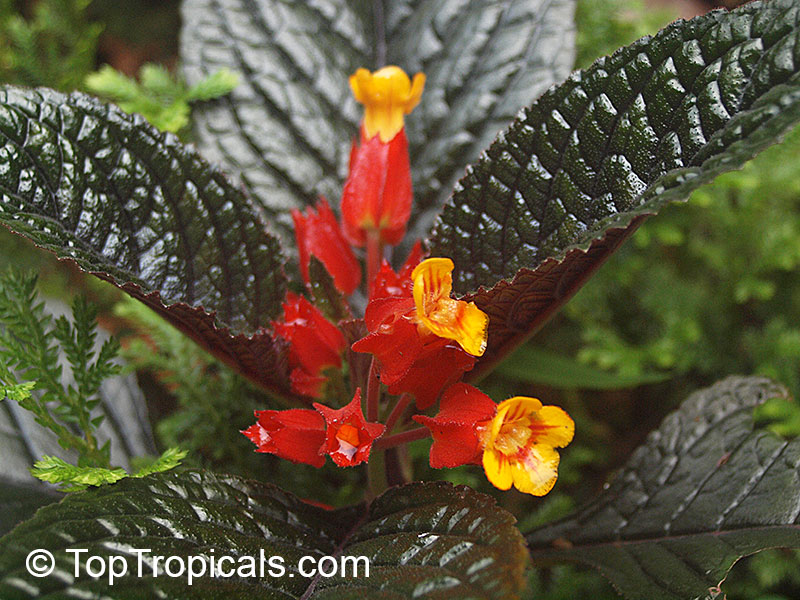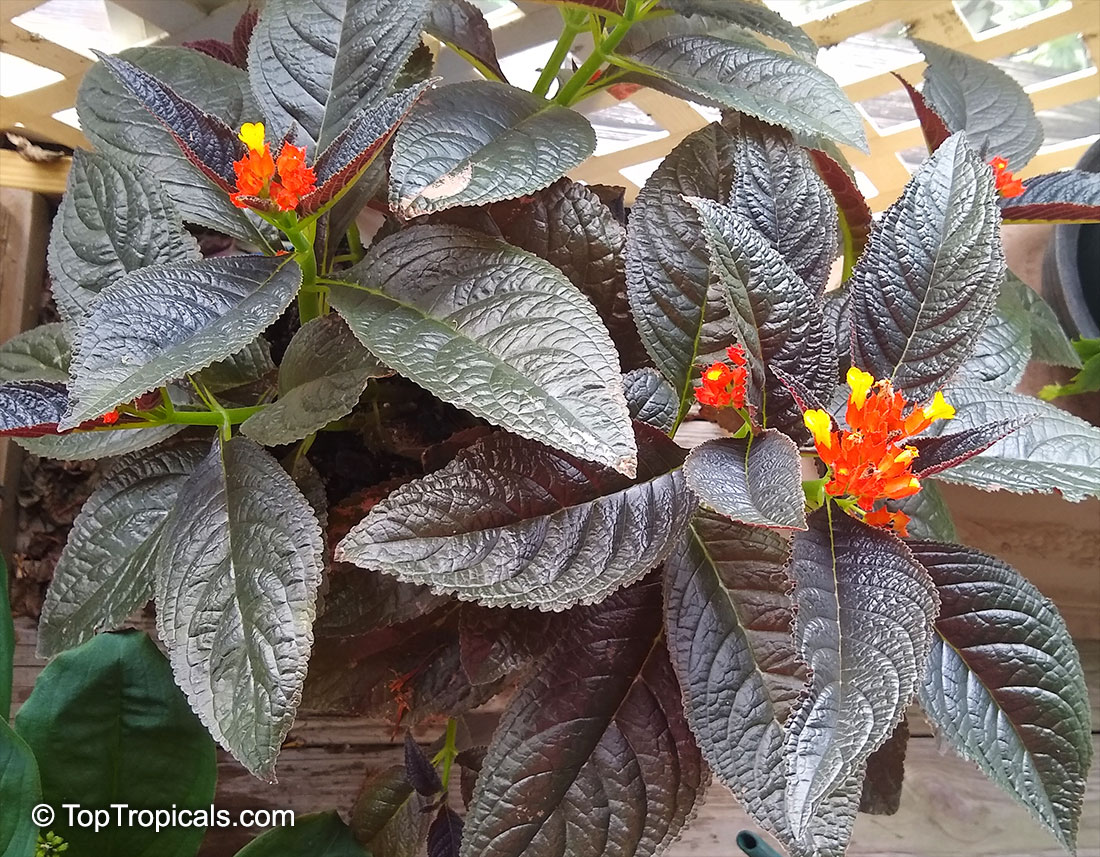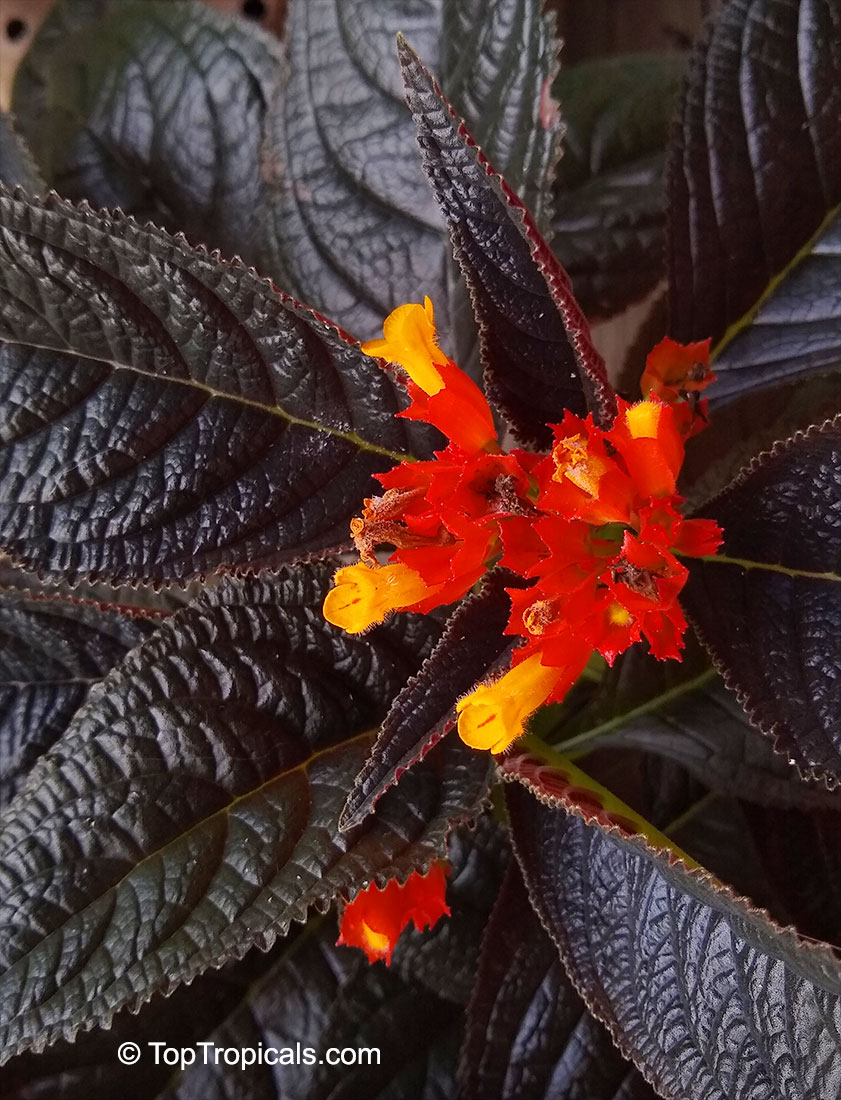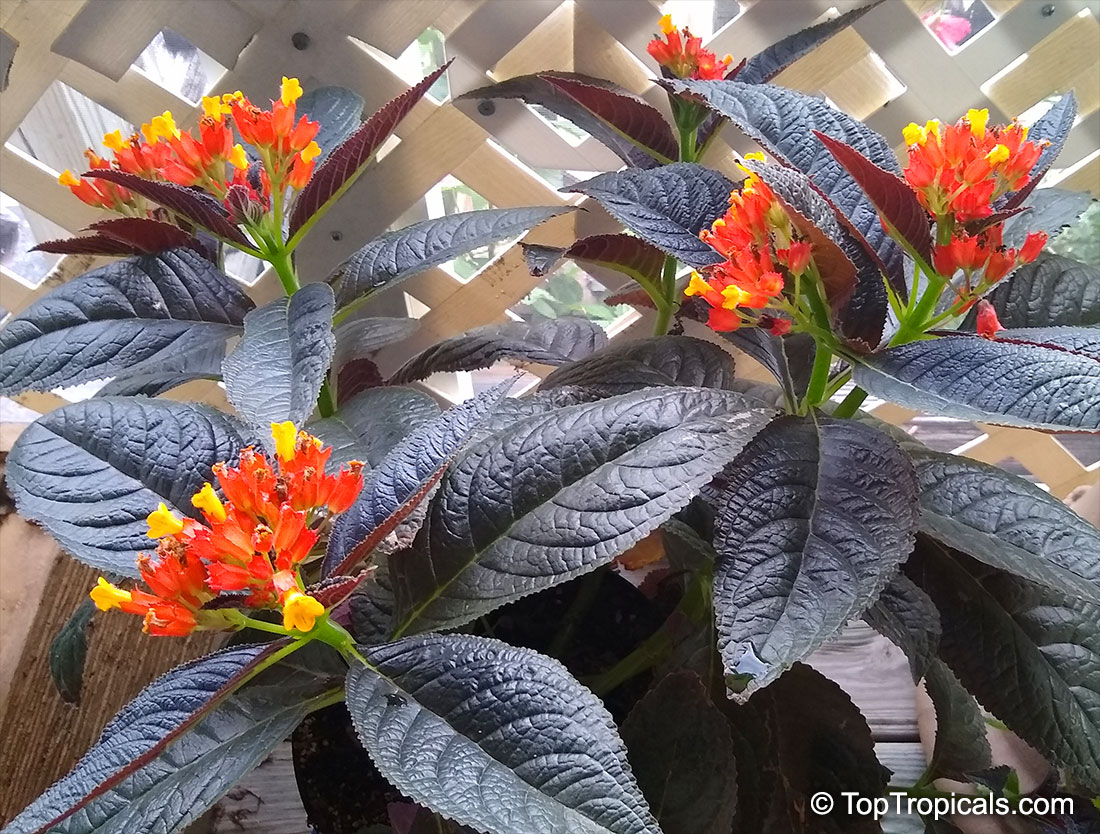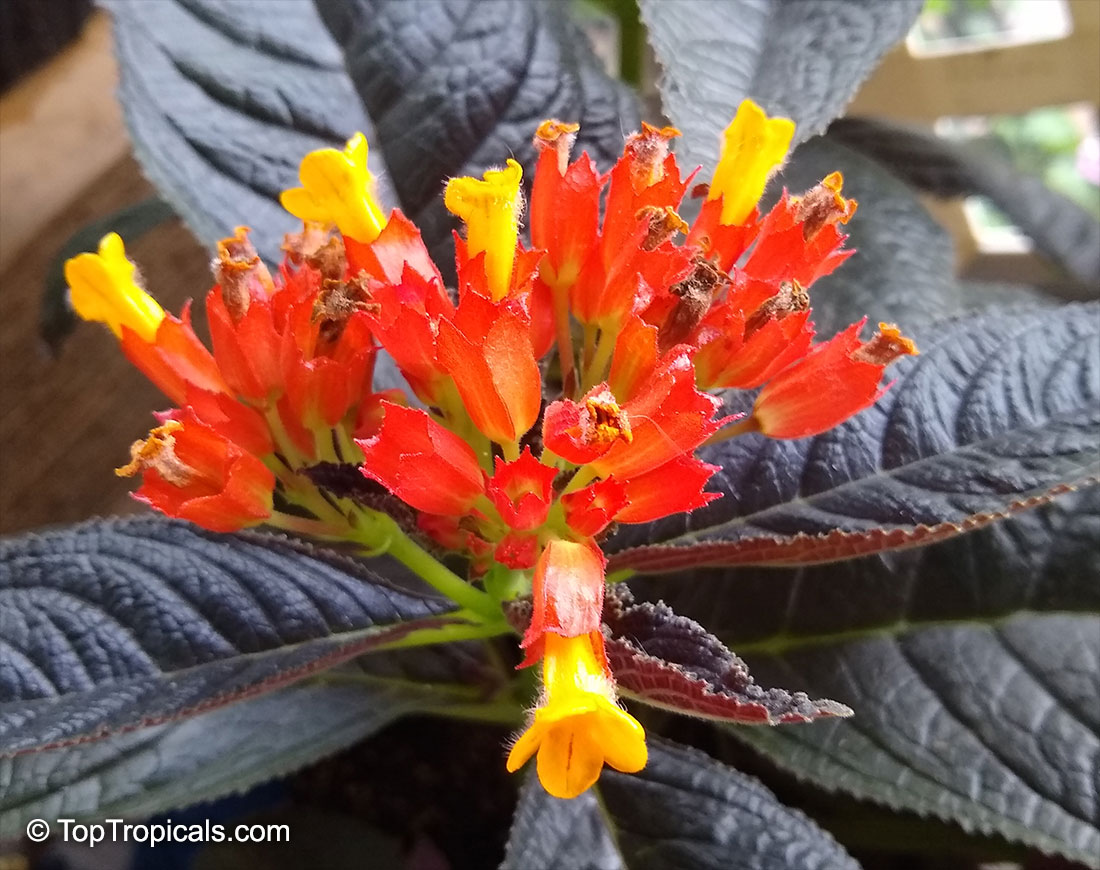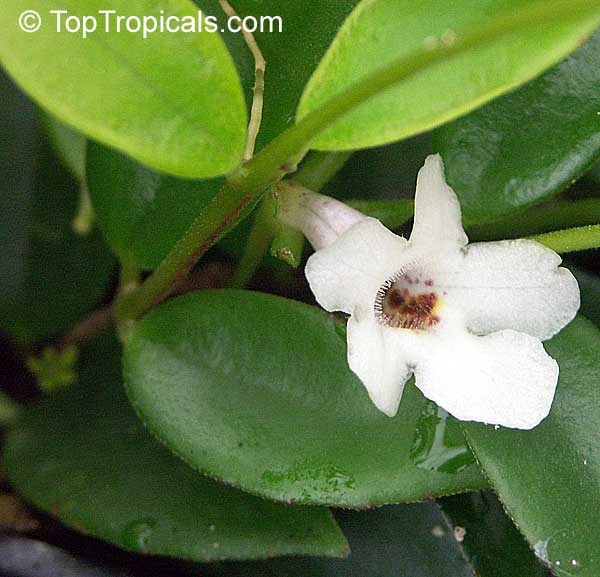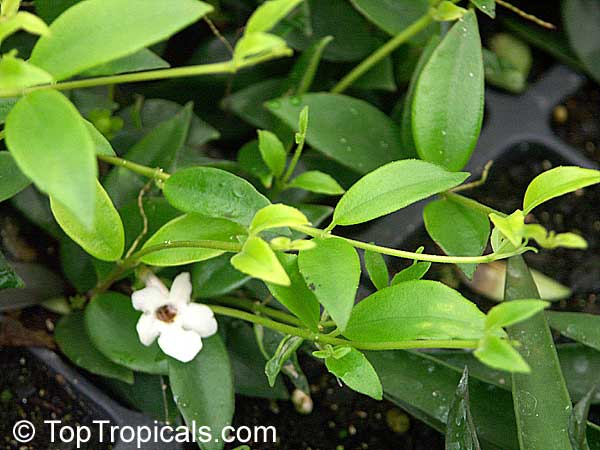Gesneriaceae - Botanical Family
Top Tropicals Plant Encyclopedia
| Number of plants found: 52 | Next | 
|
Go to page: | 1 | 2 | 3 | 4 | 5 | Last |
Botanical name: Achimenes sp.
Common names: Cupid's Bower, Hot Water Plant, Monkey-Faced Pansy, Magic Flower, Orchid Pansy
Family: Gesneriaceae
Origin: South America










Achimenes species and hybrids are commonly grown as greenhouse plants, or outdoors as bedding plants in subtropical regions. The species have been extensively hybridized, with many of the hybrids involving the large-flowered species A. grandiflora and A. longiflora. Many of the species and their hybrids have large, brightly colored flowers and are cultivated as ornamental greenhouse and bedding plants.
Botanical names: Aeschynanthus longicaulis, Aeschynanthus marmoratus
Common name: Zebra Basket Vine
Family: Gesneriaceae
Origin: Southeast Asia





Aeschynanthus longicaulis, commonly referred to as Zebra Basket Vine, is a unique, semi-evergreen, perennial, flowering vine native to Southeast Asia. It is an ornamental climber with the eye-catching glossy green foliage, marked with an unmistakable maroon central venation pattern which gives the plant its distinct zebra-like stripe. This tropical vine is perfect to be grown in most climates as an evergreen wall cover or climber on overhead structures.
While growing in its native tropical climates, its preferred position is semi-shade, such as on side of a building or under a tree. However, in cooler zones, the Aeschynanthus longicaulis can successfully be grown in pots and moved indoors in winter, providing they are kept warm. The caring and growing requirements of Aeschynanthus longicaulis are quite simple and easy to follow. It requires regular water in a well drained soil and should be fed with a balanced liquid fertilizer a few times during the growing season.
The Aeschynanthus longicaulis performs best in USDA Hardiness Zone 9 to 11. Given the right conditions and growing requirements, it will attractively bloom in summer with unusual small, tubular flowers in attractive shades of pink, yellow and orange. Combining its attractive foliage and interesting blooms, it's not difficult to see why this vine can make a lovely addition to virtually any garden.
Overall, Aeschynanthus longicaulis offers an unusual color combination and eye-pleasing ornamental foliage and flowers, making it a great container plant for patios and terraces and an ideal choice for planting along walls and trellises. The Zebra Basket Plant, if provided with sufficient indirect sunlight and regular water, will surely make a wonderful show because of its stunning foliage and extraordinary bloom.
Botanical names: Aeschynanthus radicans, Aeschynanthus lobbianus
Common name: Lipstick Plant
Family: Gesneriaceae
Origin: Southeast Asia









Aeschynanthus is a large genus of Old World tropical herbs, similar to the genus Columnea in Central and South America. Both are often trailing epiphytes with large, showy flowers.
The appearance of the various Aeschynanthus species varies widely. The original "Lipstick Plant" has shiny, hard-surfaced leaves with bright red flowers that emerge from a dark red tubular calyx, resembling lipstick emerging from a tube. It is an epiphyte that grows in the angles of branches in the rainforest. As with all epiphytes, it does not live as a parasite on the tree, but takes its nourishment from fallen leaves and twigs that accumulate in the crevices of branches.
To care for the Lipstick Plant, it needs plenty of light but not direct sunlight. They thrive in summer heat, and winter temperatures should not drop below 60 degrees. It should be grown in semi-shade and needs regular or moderate water. If you live in a colder area, you can grow it in pots and make sure to water it regularly and keep the soil evenly moist.
Botanical name: Aeschynanthus sp.
Common names: Lipstick Plant, Lipstick Vine
Family: Gesneriaceae
Origin: Southeast Asia








A very attractive flowering vine, that is mostly used in hanging pots. Water freely durning spring to fall, but keep the soil a little drier in the winter. The trailing stems can be 2ft long, so they may need pruning after flowering has finished. The plant tolerates most house temperatures. Ideal temperatures are 60 degrees at night but 10 to 15 degrees higher during the day. A. pulcher is one of the classic lipstick plants, and is similar to A. lobbianus -- except for the tan colored calyx.
Botanical name: Aeschynanthus speciosus
Common names: Basket Plant, Lipstick Plant
Family: Gesneriaceae
Origin: Southeast Asia








Aeschynanthus speciosus is a species of flowering plant native to tropical rainforests. It is known for its large, fleshy, dark green leaves and colorful flowers, which can be red, crimson, or vinous in color, with yellow or orange interiors.
In cold regions, this plant can be grown in containers and brought indoors during the winter. To prepare the pot, mix equal parts potting soil, peat moss, and perlite, and keep the soil moist. During the growing season, fertilize the plant every two weeks. In USDA Zone 9-11, it can be grown in full sun and should be watered once a week.
Aeschynanthus speciosus is an excellent choice for hanging or trailing plants, and is suitable for a greenhouse, sunroom, or conservatory. It thrives in high humidity and warmth, and requires strong, indirect light. As a groundcover, it can be planted up to two feet apart in shade or semi-shade. It blooms from late spring to fall.
Botanical names: Alsobia dianthiflora, Episcia dianthiflora
Common name: Lace Flower
Family: Gesneriaceae






Botanical name: Besleria sp.
Common name: Besleria
Family: Gesneriaceae
Origin: Central America, South America






Species, like the Besleria sp., are worthy of greater attention. A small shrub up to two to five feet tall, Besleria sp. is native to Central and South America, and is known for its beauty and its need for exacting care. It is well suited to broad swathes of subtropical and tropical climates, but may require slightly cooler conditions if grown in container. It is a highly sought-after ornamental plant, with its singular beauty of red and crimson to vinous flowers, as well as yellow and orange blooms. It is a very popular species in the garden and works best in partial shade to semi-shade.
When it comes to plant care, Besleria sp. needs regular watering, especially when it is growing in container. Of course, if you wish to grow your Besleria sp. in colder regions, it can be done with some extra attention. Temperatures should stay between 10 and 20 degrees Celsius, and the potting soil should be kept on the dry side during the winter months. For most plants, this means watering it only once every one to two weeks, depending on the temperature. Water should be added when the top two inches of soil is completely dry. Blooming will take place in the spring and summer months and you can ensure that your Besleria sp. will continue to bloom deliciously vibrant flowers for years to come.
Feeding your Besleria sp. should be done every month. The soil should be slightly acidic, and you will want to use a fertilizer with a higher potassium content, like a 10-20-10 blend, to further promote flowering. You should also be sure to give it a light pruning in the late winter or early spring, cutting just above the leaf nodes to encourage bushier plant growth and more flowers.
With proper care, you too can enjoy the beauty of Besleria sp. in your own garden. Whether looking to add a splash of vibrant, multi-hued flowers to the middle of a shady spot, or a container on the terrace, this hardy and resilient plant will thrive and bring you joy throughout the changing seasons.
Botanical names: Chrysothemis friedrichsthaliana, Tussacia friedrichsthaliana
Common name: Chrysothemis
Family: Gesneriaceae
Origin: Central America





Chrysothemis friedrichsthaliana is a small shrub, growing 2-5 ft in height. It is native to Central America and can be grown in USDA Zones 9-11. It prefers partial shade, but can tolerate full sun, and should be planted in soil that is rich and well-drained. It does not like dry soil, so regular water is necessary for its optimum growth.
To keep it thriving, Chrysothemis should be watered moderately, allowing the top inch of the soil to dry out between waterings. If you live in a cold region and keep your Chrysothemis in a pot, make sure to bring it inside during the winter and store it in a well-lit area with good air circulation. During the colder months, be sure to water less frequently. Chrysothemis does not require much in the way of fertilizer, but a small amount of balanced fertilizer can be added to the soil every few months during spring and summer to help keep it healthy.
This lovely shrub is an eye-catcher, with its bright yellow and orange flowers. The flowers appear from late spring to early summer, and they attract several species of pollinators. It's an easy plant to maintain and an ideal choice for adding a touch of tropical charm to your garden.
Botanical name: Chrysothemis pulchella
Common names: Copper Leaf, Black Flamingo
Family: Gesneriaceae
Origin: Panama, the West Indies, Brazil









This deciduous plant is an excellent groundcover where it has to be kept low-growing, and it will reach no higher than 2ft. It's semi-shade tolerant and requires careful and attentive care. The Chrysothemis pulchella can be found native to Panama, the West Indies, and Brazil. It thrives in USDA Zone 9-11, but in colder areas, it must be grown in a pot in order to provide protection during winter months.
This tropical perennial is perfect for gardeners looking to add a splash of vibrant colors to their landscaping. It displays bright, ornamental foliage and beautiful flowers in shades of red, yellow, orange, and crimson. Its delicate blooms attract butterflies and hummingbirds as well, bringing a unique charm and ambiance to any outdoor space. The flowers are particularly eye-catching as each have a yellow corolla with red striping or spotting, and are about twice the length of the calyx.
Whether grown indoors or outdoors, it is essential to keep the soil moist at all times. Chrysothemis pulchella is hardy and can survive cool weather, but temperatures below 60F will cause the leaves and stems to vanish. The best position for it is a spot with plenty of filtered light and regular watering. All in all, this plant is an attention-grabbing addition for any garden and a wonderful choice for adorning any sunny or semi-shaded area in the garden.
Botanical name: Codonanthe gracilis
Common name: Codonanthe
Family: Gesneriaceae
Origin: South America







Codonanthe gracilis can produce a cascading stems six feet or more in length! Note the attractive orange berries, which are properly left on the plant for show purposes.
Codonanthe has high light requirements. An epiphytic soil mix, small pots and constant light fertilizing are necessary for good growth. They flourish in high humidity of 50 percent or more, but many will adapt to lower humidity.
| Next |  |
Use link to repeat this search:
https://toptropicals.com/cgi-bin/garden_catalog/cat.cgi?search_op=and&keyword_op=and&language=e&family=Gesneriaceae
&number=10&no_change_lang=1&user=tt&sale=1&first=0
